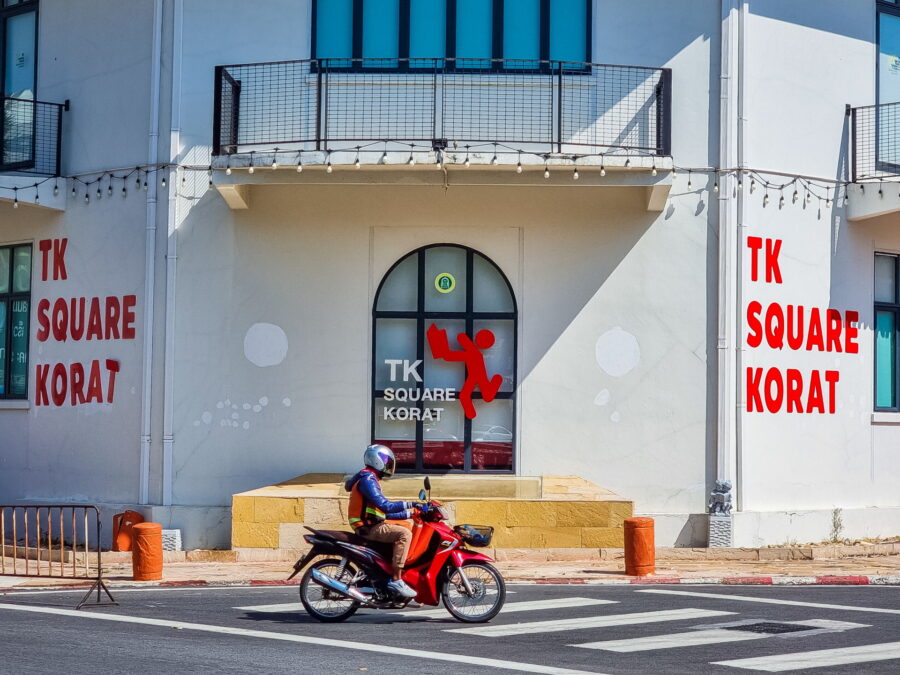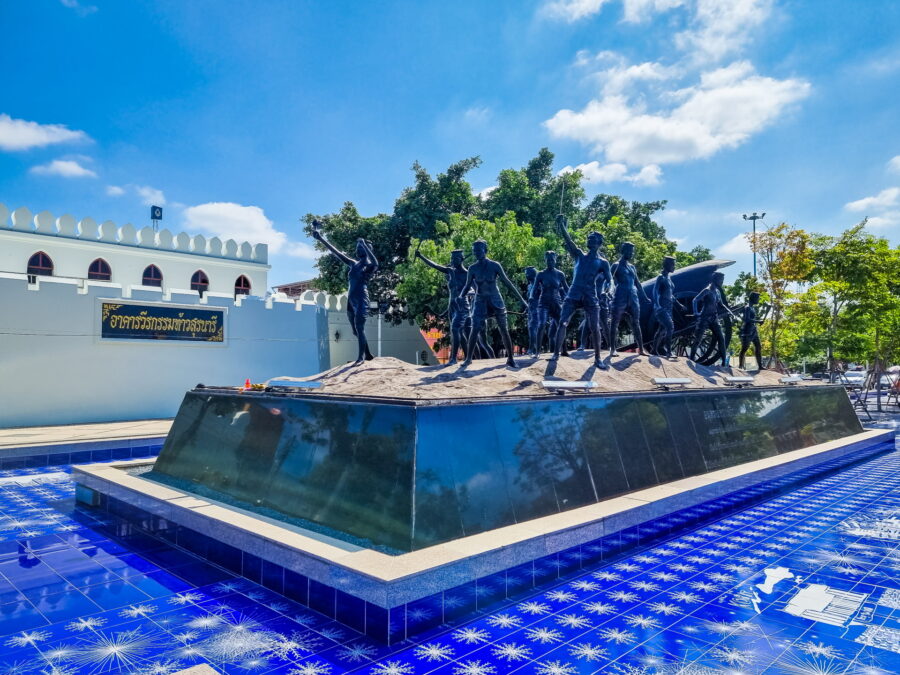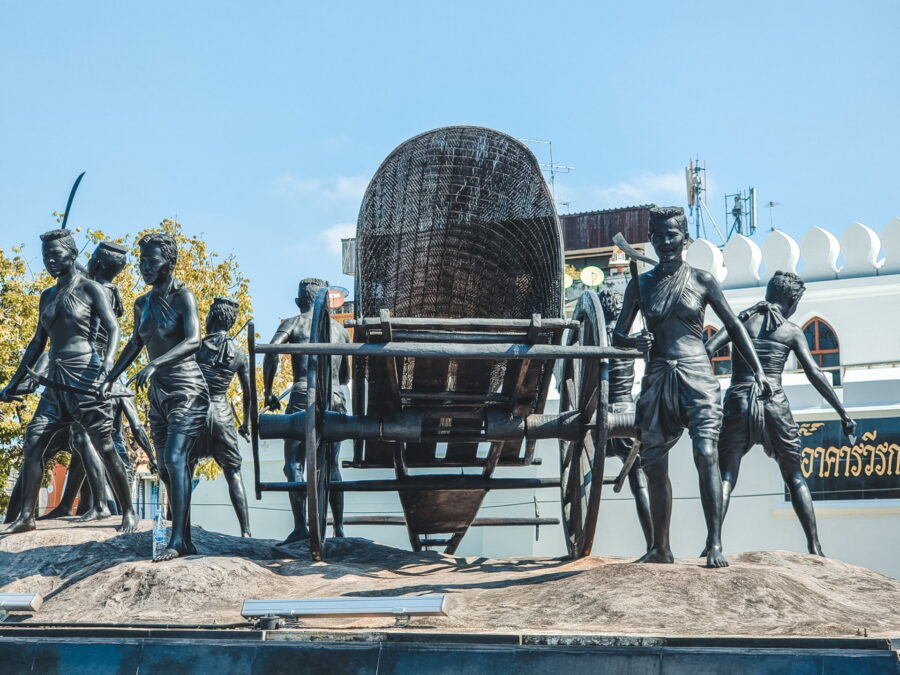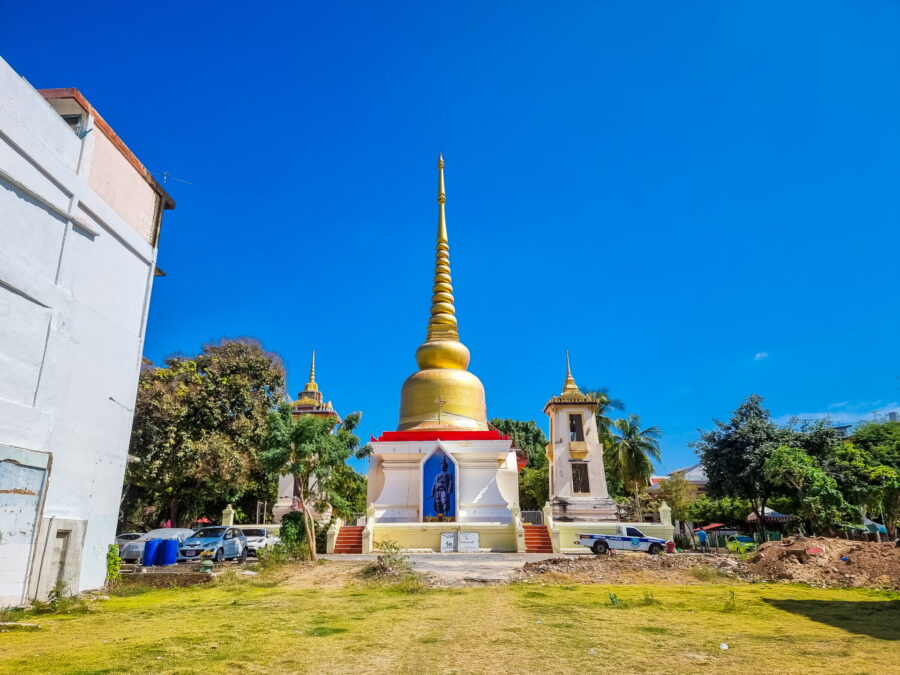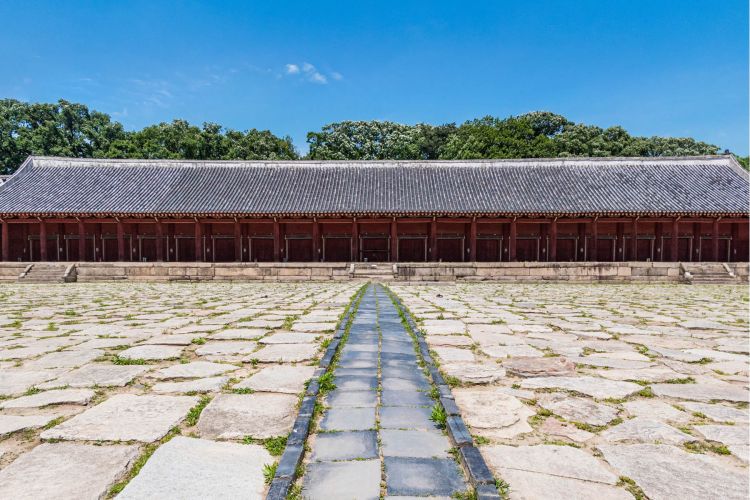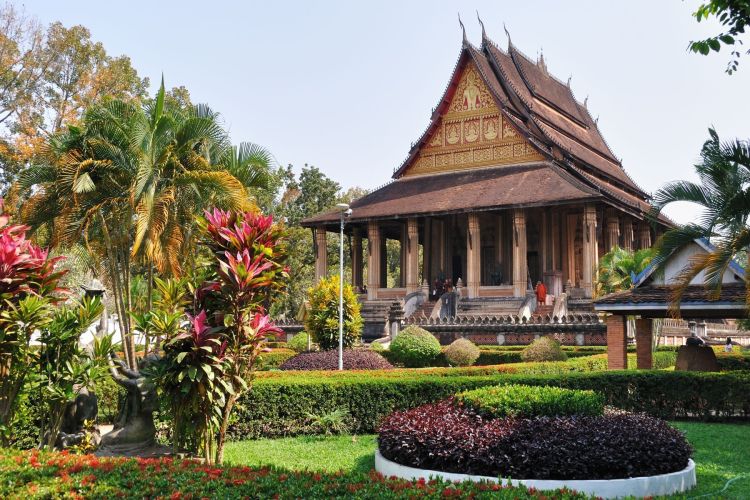Nakhon Ratchasima, formerly known as Khorat—a name locals continue to use daily—is a bit like the gateway to Isan, the vast region in northeastern Thailand that is still largely overlooked by most travelers.
Many people simply pass through without really stopping, and yet Khorat is worth spending some time there. Even though it's a sizeable city, it boasts the tranquil atmosphere typical of Isan, some sometimes surprising temples, and a few historical curiosities, including several Khmer ruins, hidden on the outskirts.
It may not be the most vibrant destination in the country, but if you're curious, like to get away from it all, or simply want a stress-free stopover, Khorat has plenty to offer.
Note that this time, I've limited myself to the city and its surroundings. There are other interesting sites in the province, but they deserve a separate article.
Nakhon Ratchasima: walks and visits in the historic center
As I mentioned above, although the city has 140 inhabitants, its center remains on a human scale, and compact enough to be explored on foot. It is not the most spectacular city, but you will come across some interesting temples, a monument venerated throughout the region, and some buildings with remarkable architecture.
To help you find your way around, here is a map with all the places mentioned in this article, both in the city and on the outskirts:
Wat Phayap
We start with Wat Phayap, located in the northwest corner of the old city. To put things in context: I parked within the temple grounds, which served as my starting point for exploring the historic center on foot (with the exception of Wat Sala Loi, which is a bit out of the way, although accessible on foot if you don't have a car).
This royal temple stands out for several aspects, starting with its artificial cave built inside a building. A curiosity that one might not necessarily expect: while it is common to see temples built in natural caves, the opposite is rather rare.
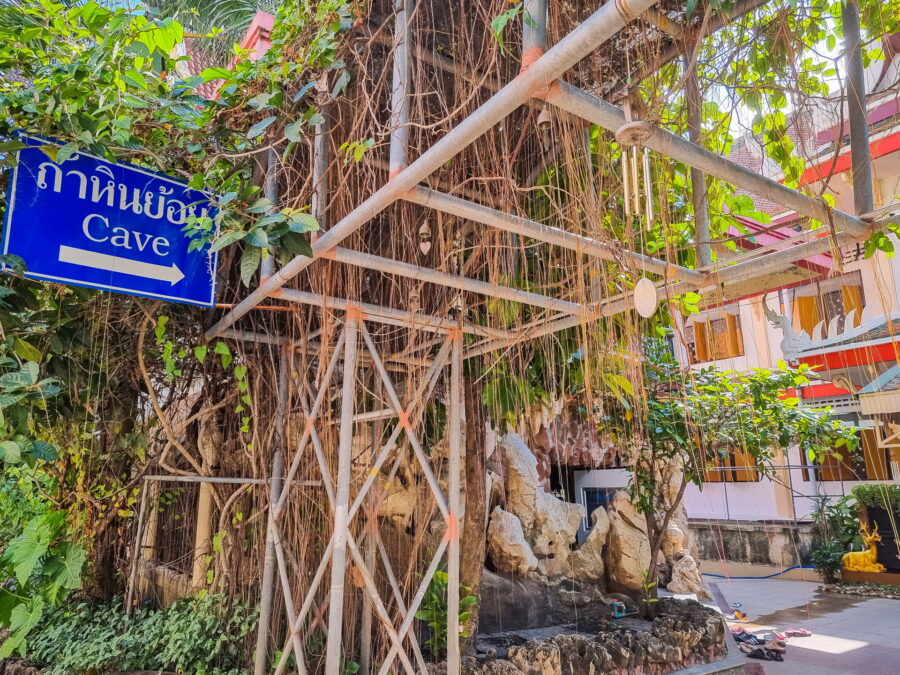
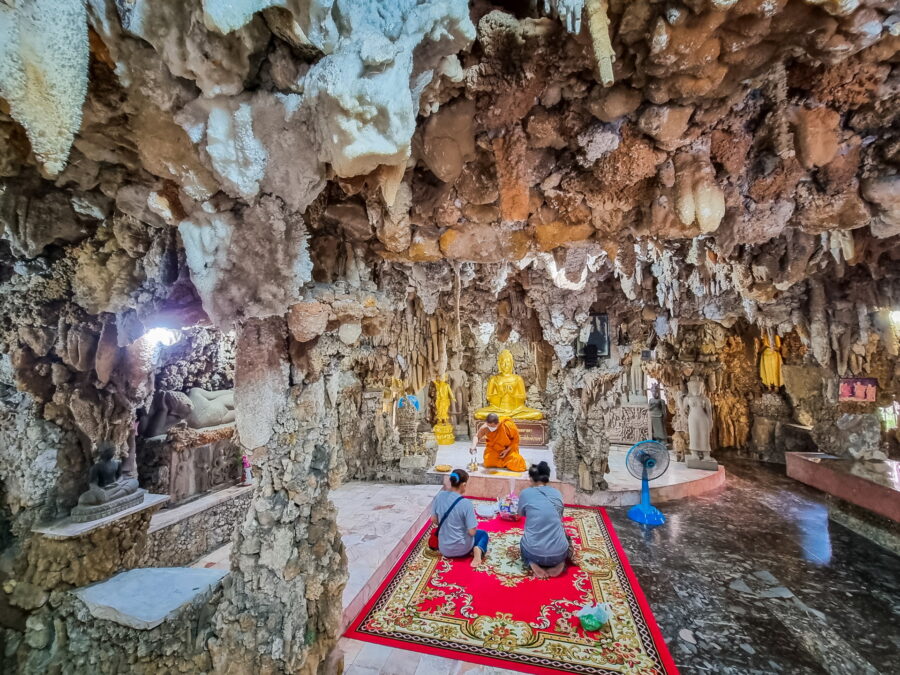
Beyond this unusual "cave," the rest of the temple's buildings are decidedly modern—even though the site's foundation dates back to the city itself. The main prayer hall was rebuilt to replace the original, which had fallen into disrepair. The architecture is a departure from the usual white-fronted structures: here, a curve gives the building the shape of a junk, deliberately inspired by the Ayutthaya period at its height.
Another peculiarity: the building is mostly made of marble. Inside, there is a statue of Buddha—classical in itself—but depicted in an unusual posture, different from the cross-legged sitting position with one hand on one knee, seen almost everywhere else.
Finally, this golden statue is installed under a marble dome, and flanked by two guardians in the form of Khmer lions. A truly unique temple, which is therefore worth a little visit.
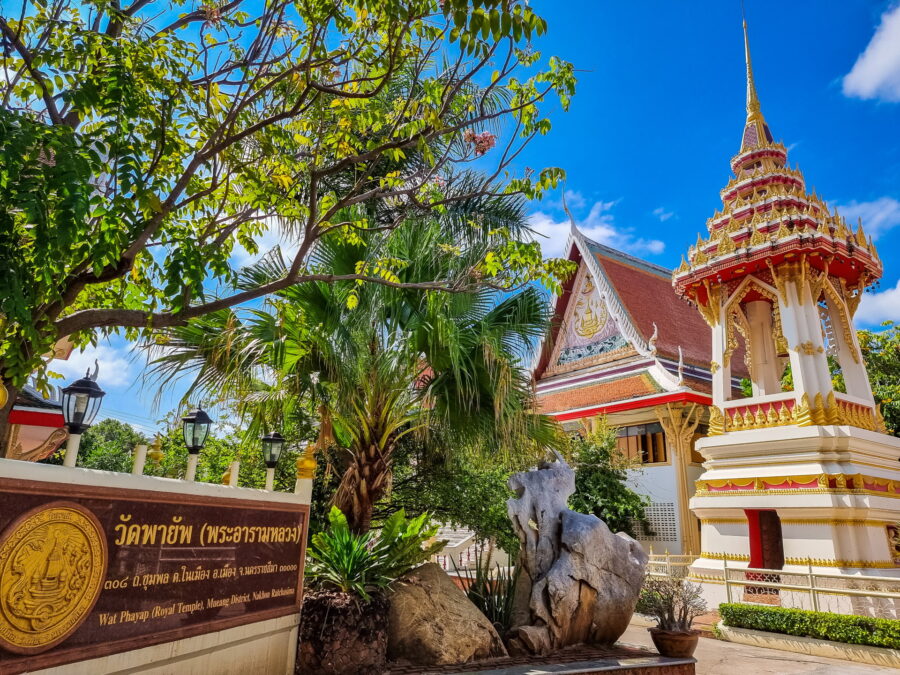
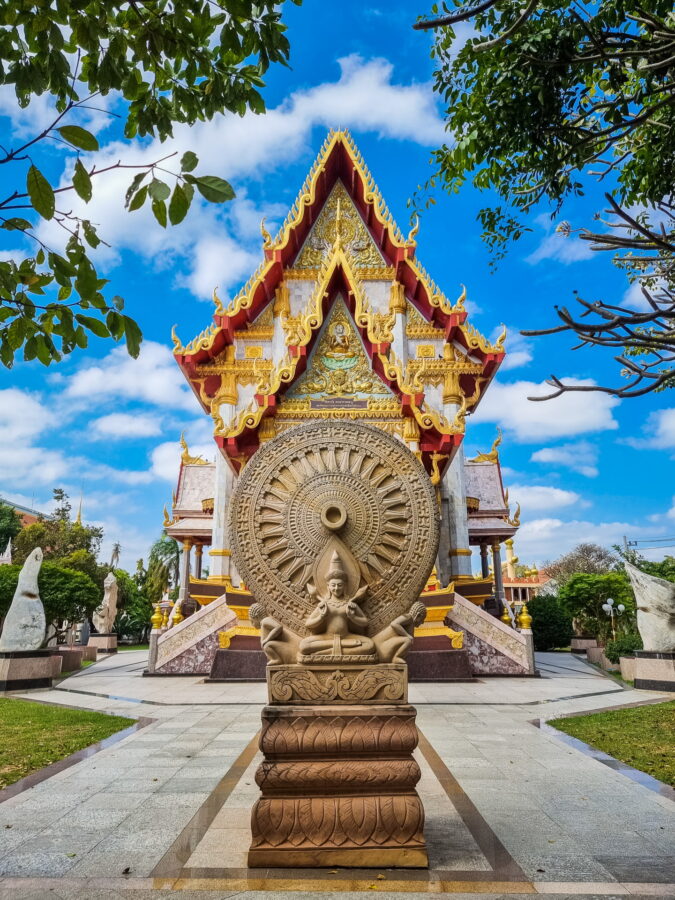
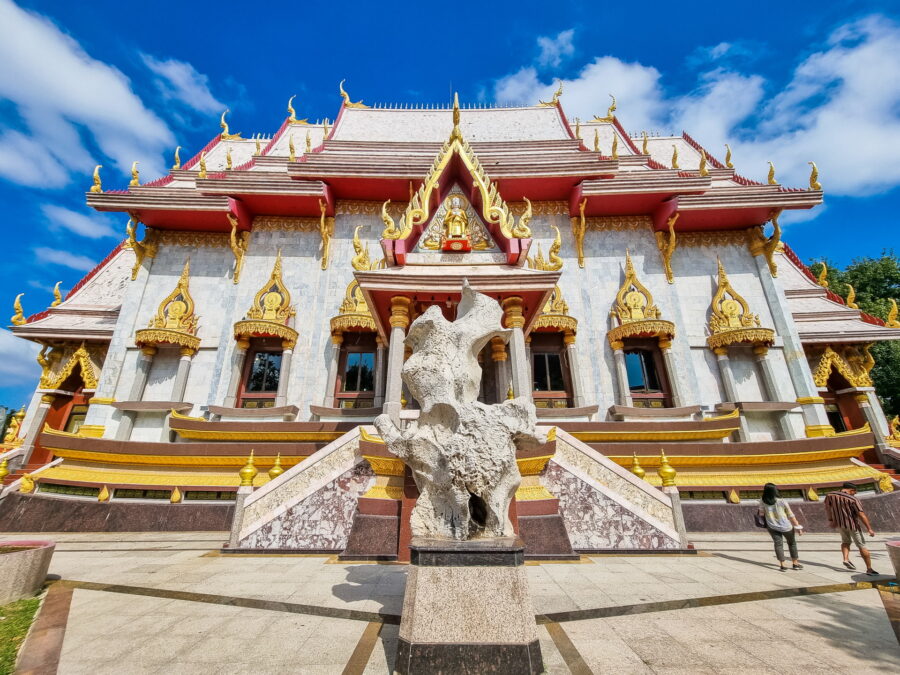
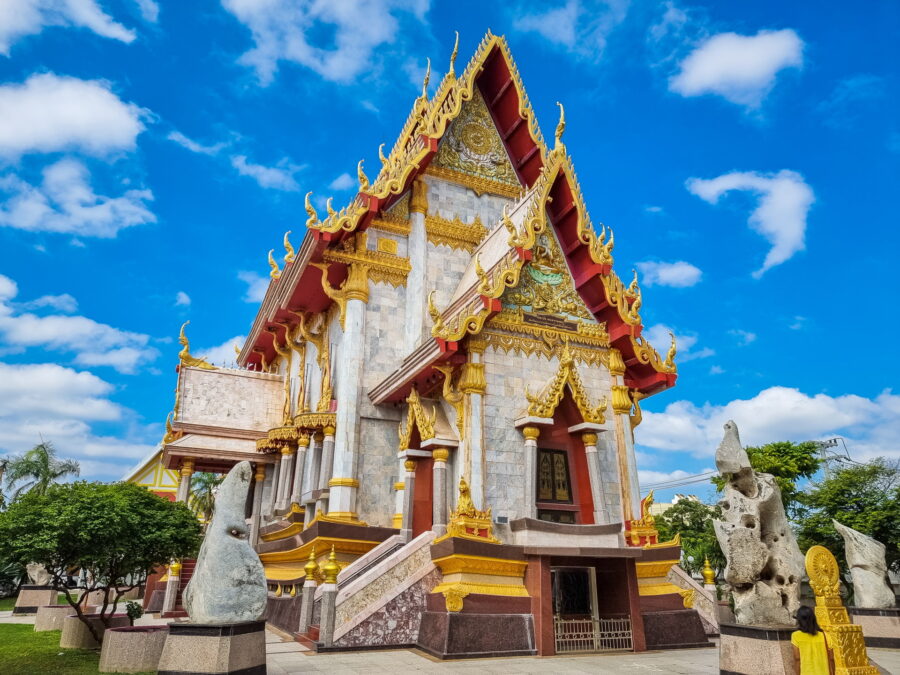
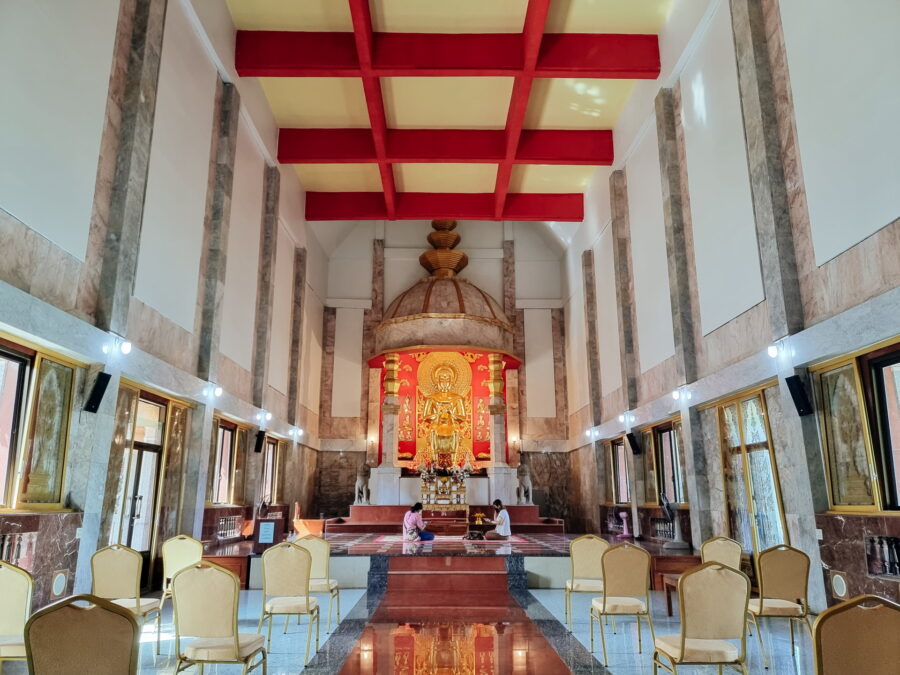
Suan Rak Park and the monument of Thao Suranari (Ya Mo)
We continue on to the symbolic heart of the city: the monument dedicated to Thao Suranari, nicknamed "the courageous one," also called Ya Mo (Grandmother Mo), a heroic figure of the region. Her statue, erected on a large esplanade, is a true place of meditation for the inhabitants.
People come here to pray, light incense, make offerings... and it's almost always full. Even less so on the day of our visit, in the middle of New Year's, when we were also able to watch traditional dance demonstrations. It's a good starting point to experience the locals' attachment to their history.
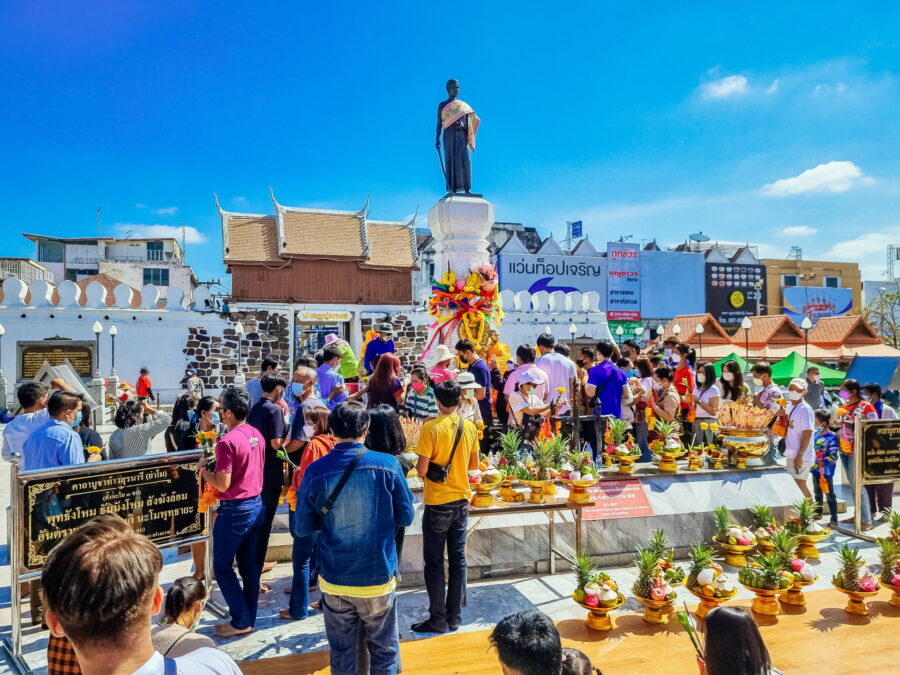
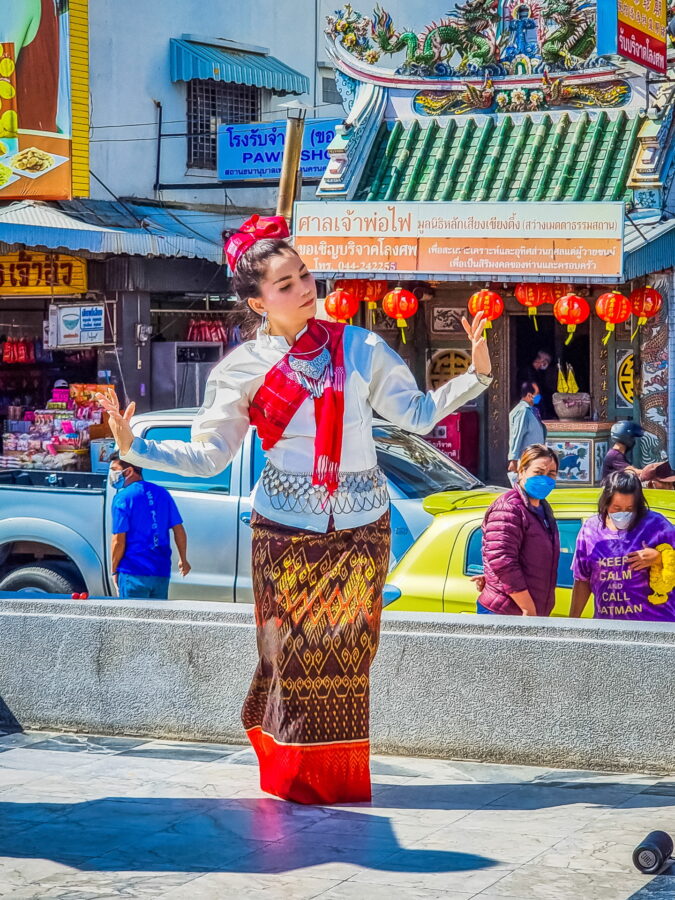
Just behind the statue, you can see one of the four original gates of the walled city: Pratu Chumphon (Chumphon Gate). This is the only original gate preserved, dating from the 17th century.e century. The others that can be seen around the city are contemporary reconstructions—and the difference is obvious. Pratu Chumphon is a rare example of the architecture of the period, with its small Thai-style wooden house perched on top, decorated with gables with tooth-shaped crests, representing the Naga's back.
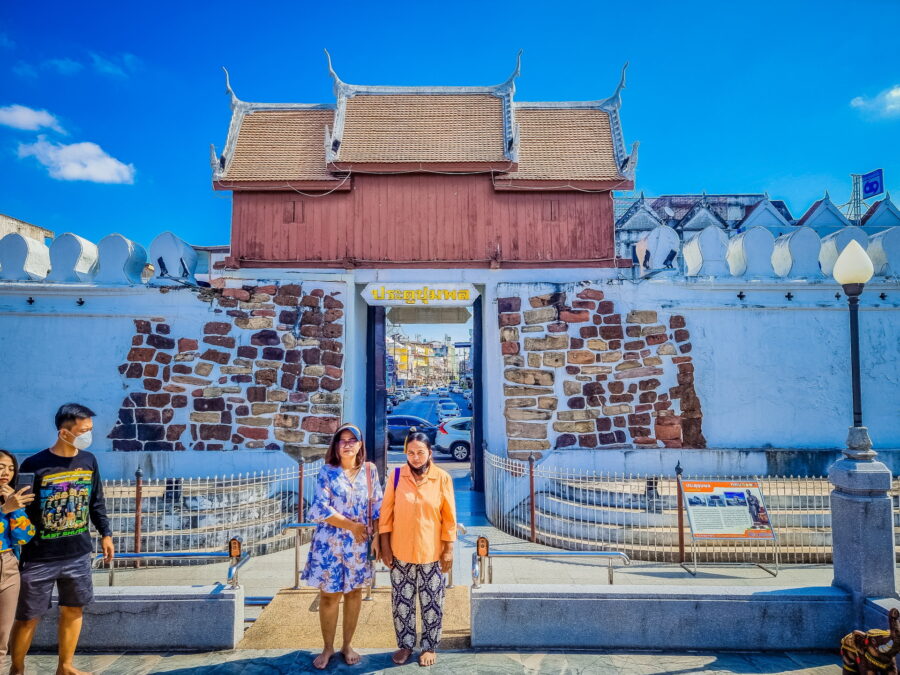
Still in this area, on the other side of the road, is another local attraction: Ruen Korat. Although the place appears to be closed today, it was a sort of small private museum, freely accessible. Housed in a traditional wooden house on stilts, it displayed some antique objects, agricultural tools, and household equipment typical of Isan. The site, surrounded by tall trees, also occasionally hosted art exhibitions.
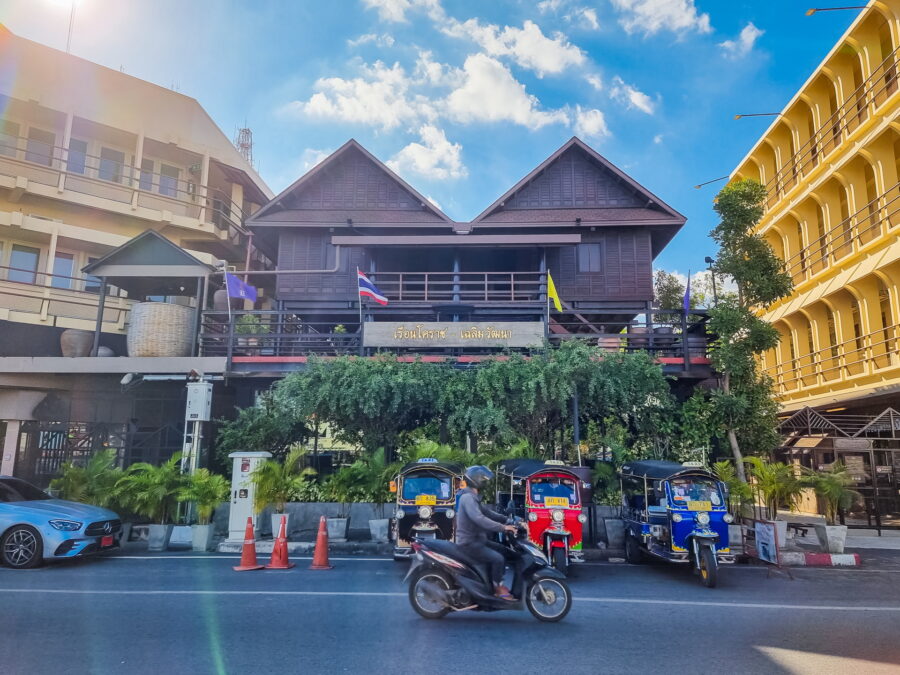
Finally, note that the esplanade where the Ya Mo statue is located extends into Suan Rak (whose name literally means “garden of love”), a green space laid out over about 400 meters above the old moat. There are a few benches lined up in the shade of the trees, but the rest of the park lacks a little greenery: the majority of the installations consist of a large paved area with fountains and ponds running along its length. That said, the presence of modern art installations brings a little originality to the whole.
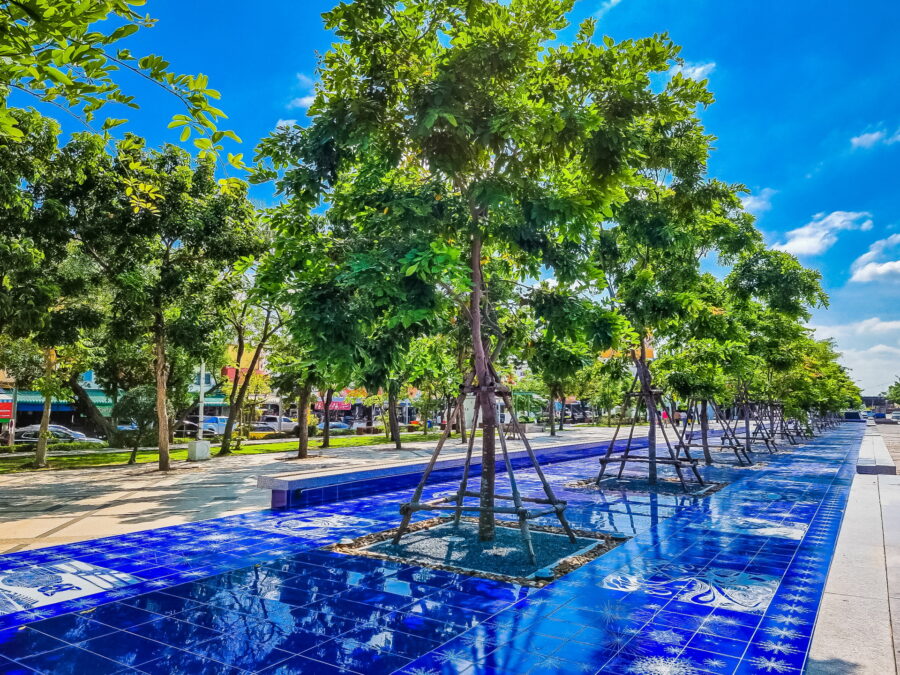
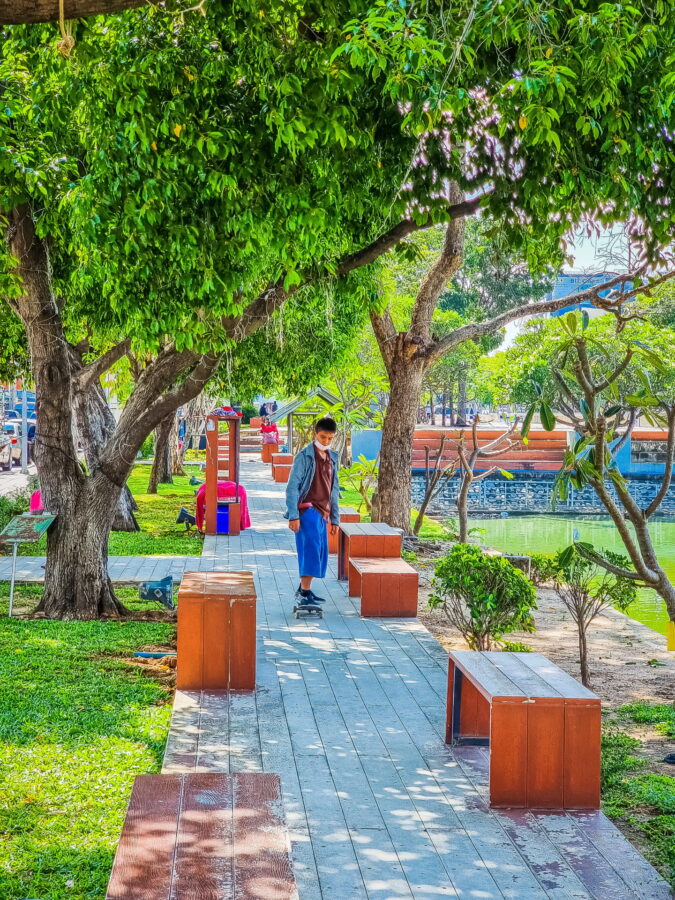
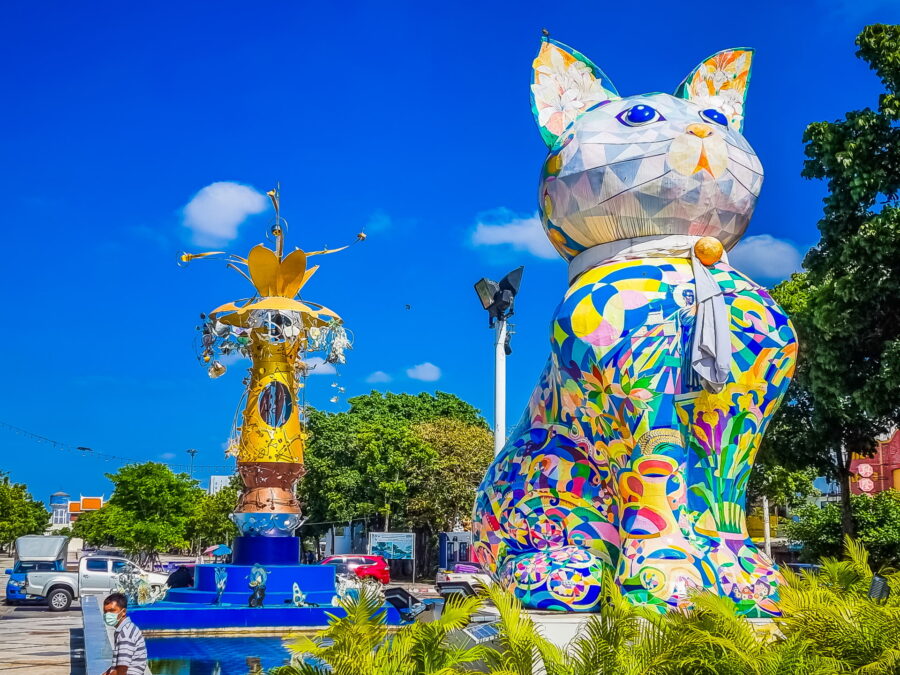
At the very end, after a section of moat, there is another reconstructed gate: the Victory Monument, also called Yamo Gate. This contemporary version includes a small observation area, and several elephant sculptures are scattered around the forecourt.
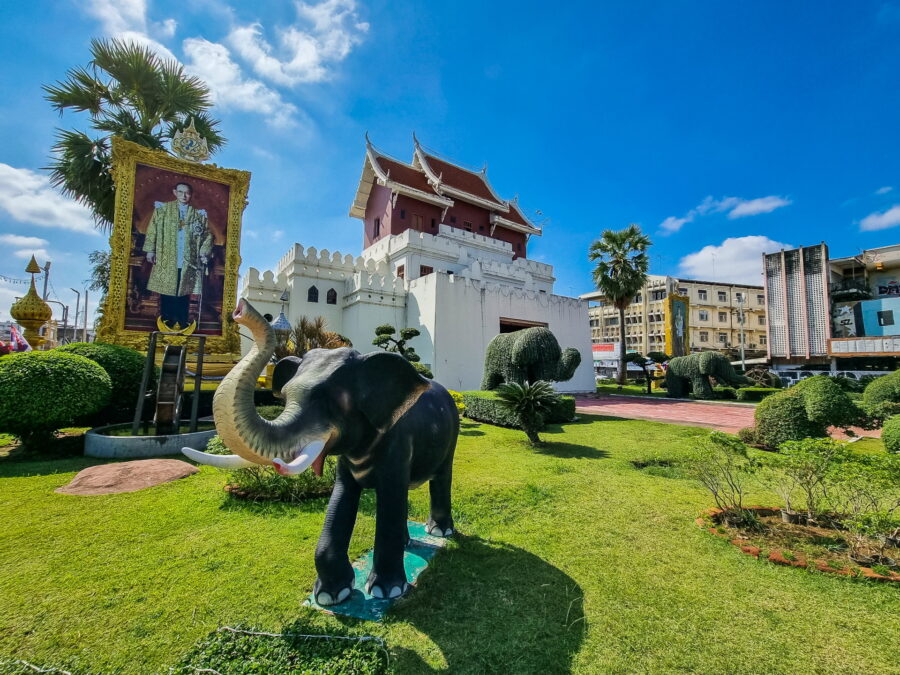
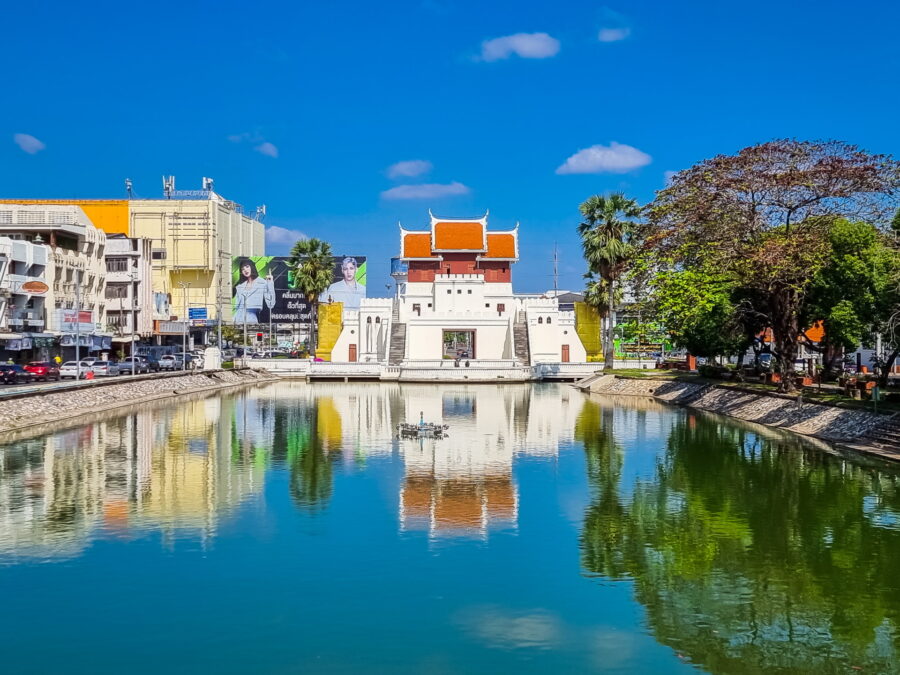
City walk and coffee break
Between two visits, we find ourselves wandering the streets of old Khorat. It's always worth a stroll through the center: you quickly come across an architectural patchwork of the kind often seen in Thai cities. A mix of well-preserved and somewhat tired old buildings, from wooden houses to Sino-Thai shophouses with decorative moldings, to the indistinguishable modernist facades typical of the 60s and 70s, all tell something of the city's past.
We also pass a pedicab still in service. These vehicles are more discreet today, but this gentleman reminds us that here, we live at a different pace. The general atmosphere, with its tangles of electrical wires above the streets and its small narrow passages—like the one leading to the sanctuary—is a reminder that San Chao Bun Paisan — is typical of an urban stroll in Thailand.
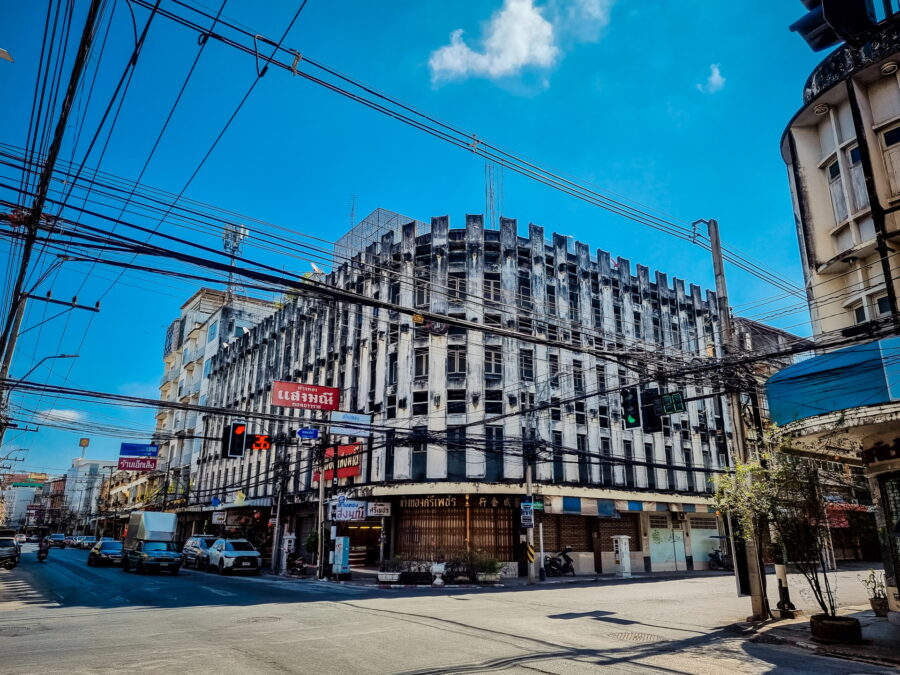
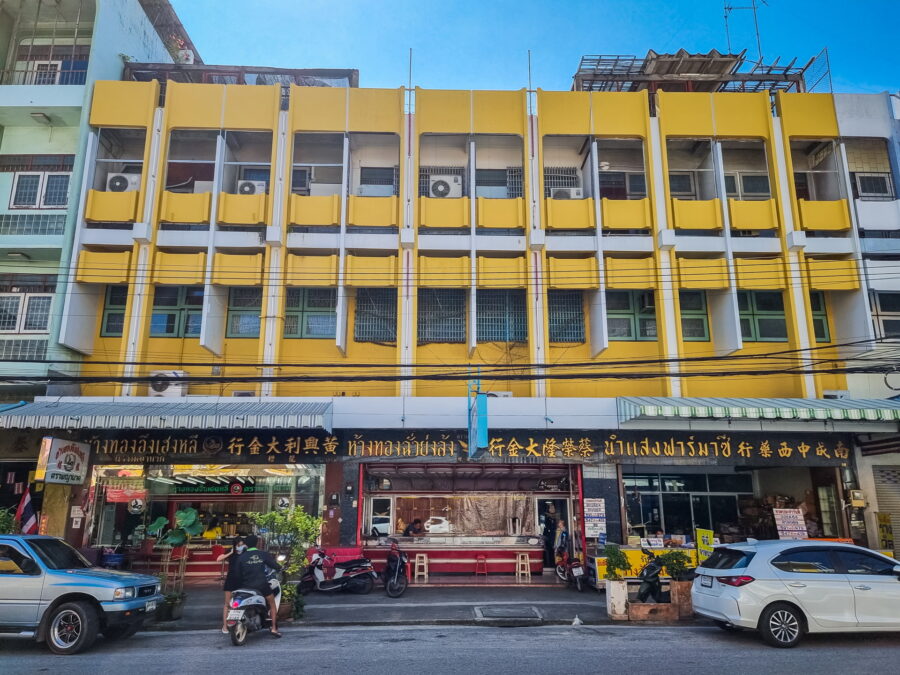
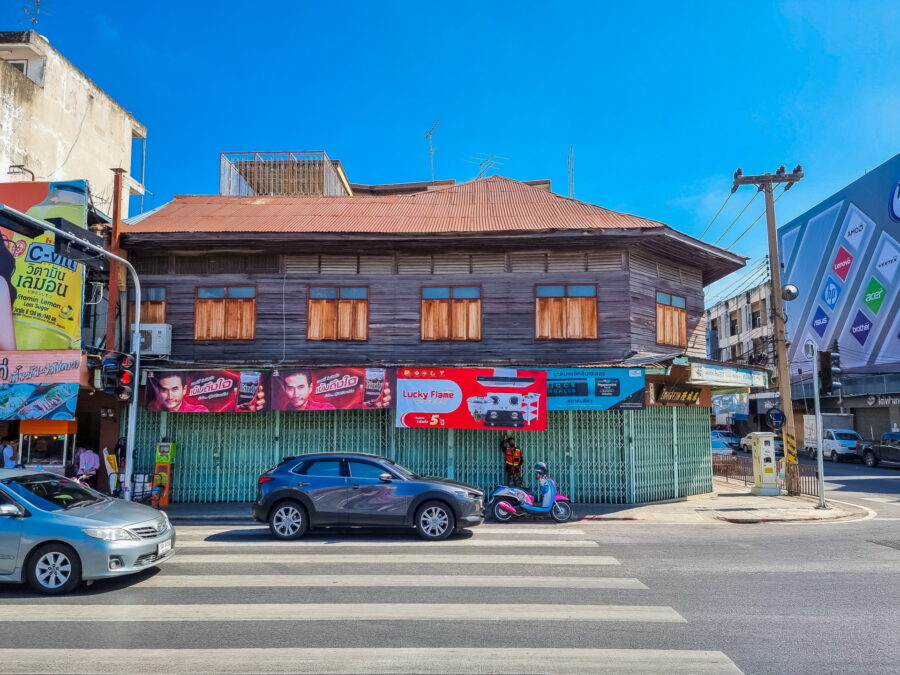
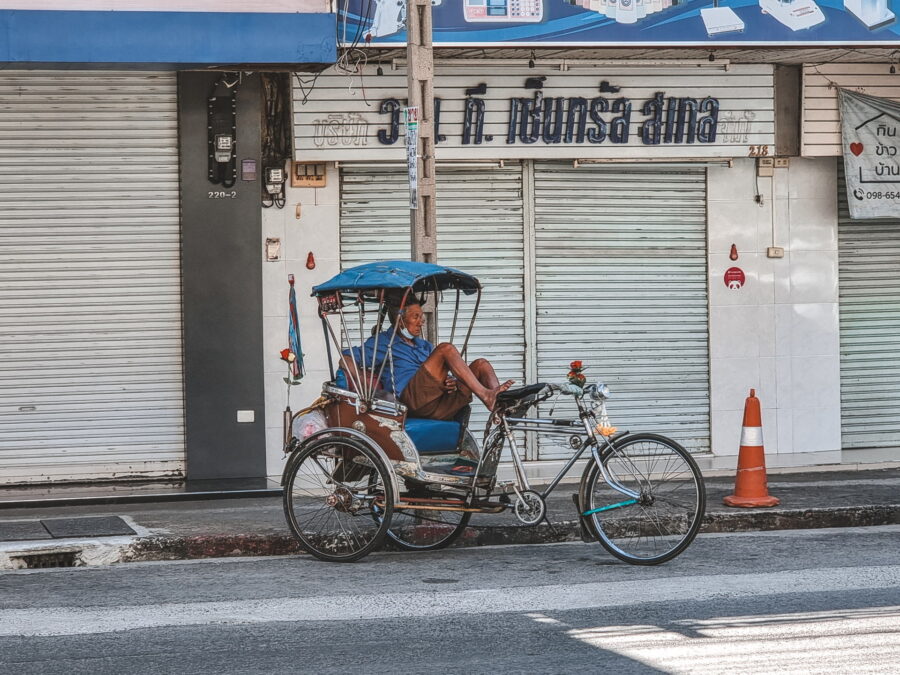
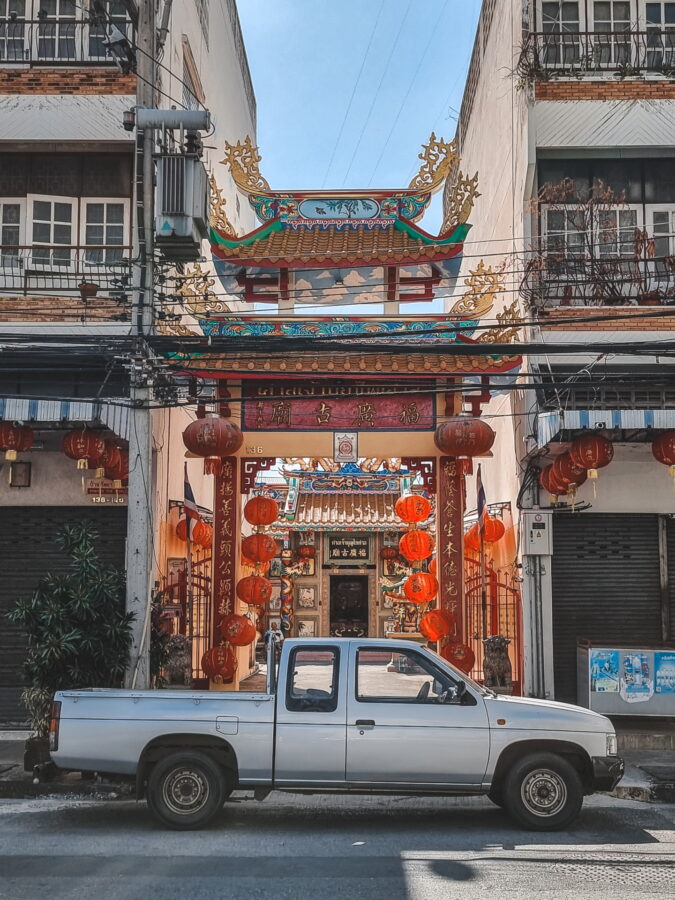
A little further on, we come across a café nicely set up in an old building: the Faifo Oldtown Café & FloralIt lives up to its name: beyond the flowery interior, its facade displays floral sculptures in wood and stucco, typical of the Sino-Thai influence. The whole thing has a well-balanced retro charm. A good reason to take our little coffee break here, which has become a ritual when exploring a city.
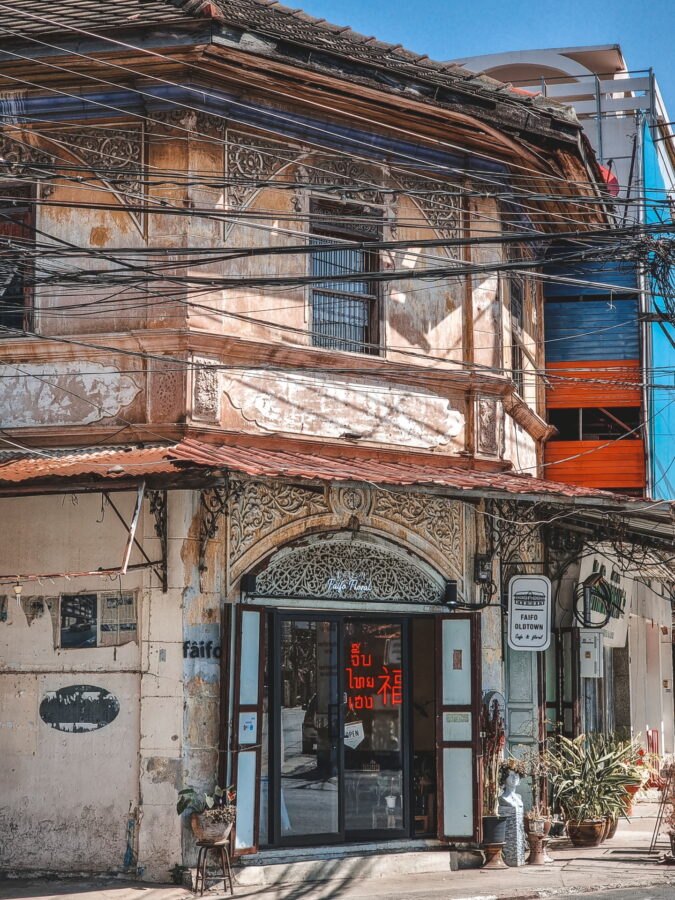
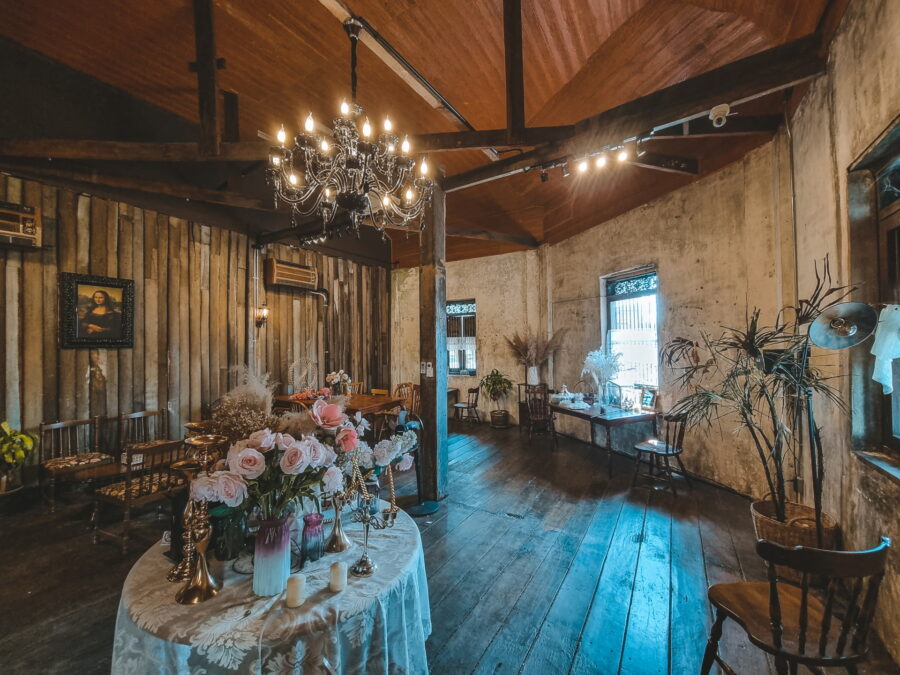
On our way to our next exploration point, we pass right next to the City Pillar Shrine — the famous city pillar shrine found in virtually every major municipality in the country.
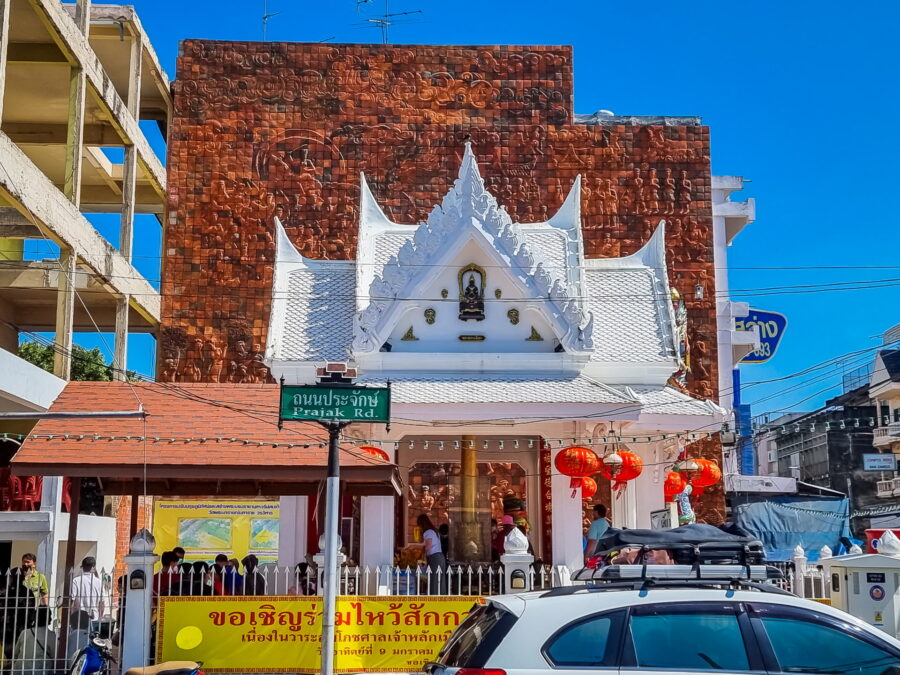
Wat Pha Narai Maha Rat
We arrive at the heart of the rectangle forming the old town of Nakhon Ratchasima. Wat Phra Narai Maha Rat — literally the Temple of King Narai the Great, the monarch who initiated the city's expansion, is one of Khorat's major temples. Its central location is no coincidence: at the time, noble figures like Thao Suranari resided just across the street from the site.
One of its attractions is its Ubosot (ordination hall), set apart on a small island surrounded by a pond. This is where I began my visit. It's not a unique layout, but it still gives the place a certain cachet. The building itself is rather modern, with bright colors and a sober interior—which I wasn't able to access that day anyway.
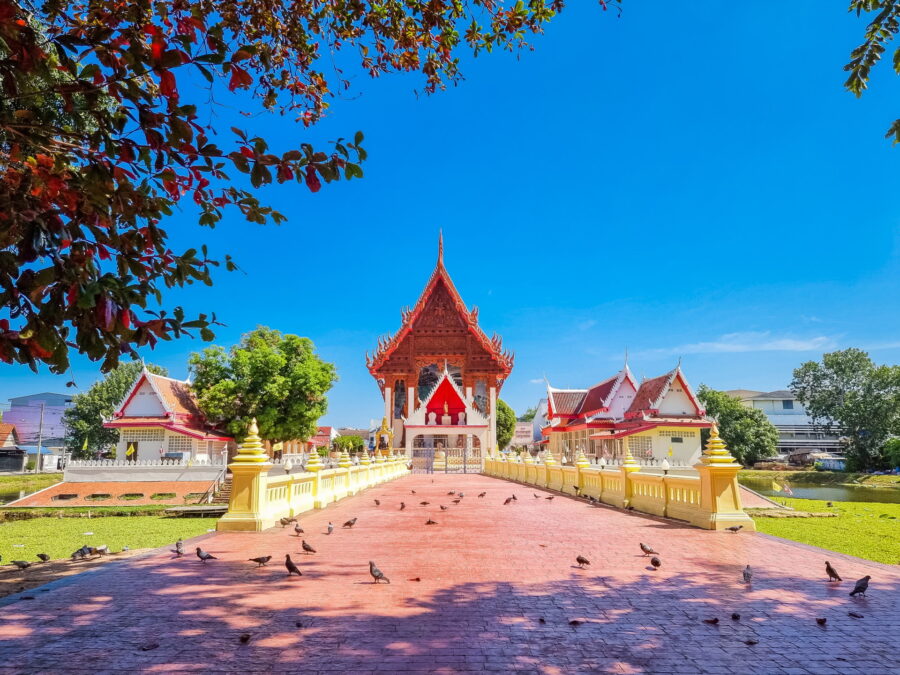
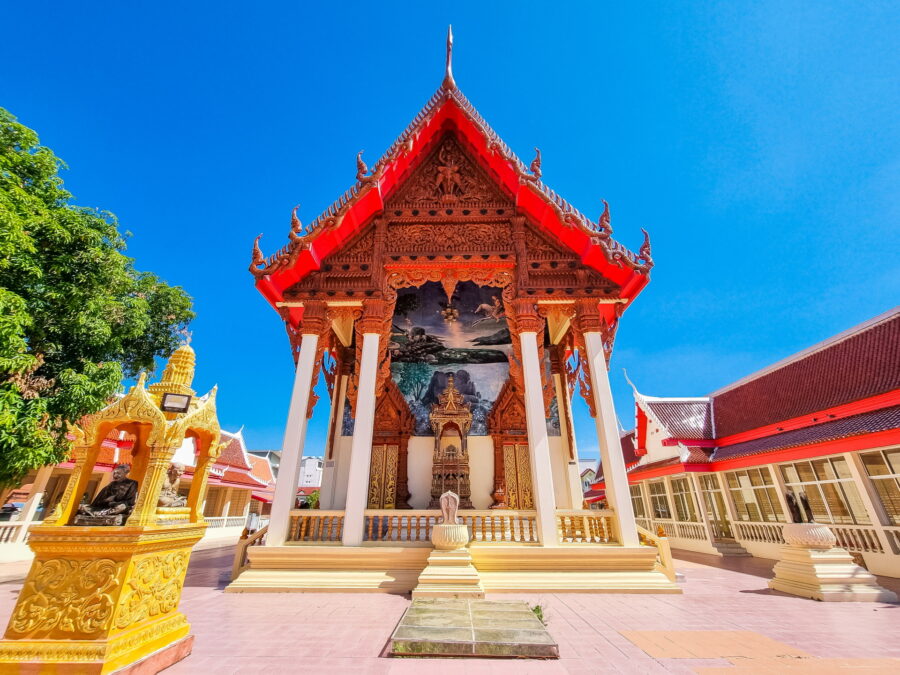
The courtyard is largely shaded, which is worth noting as urban temples are often very mineral. There is an open-air prayer area, guarded by a statue similar to those found in larger Wat phra kaew in Bangkok.
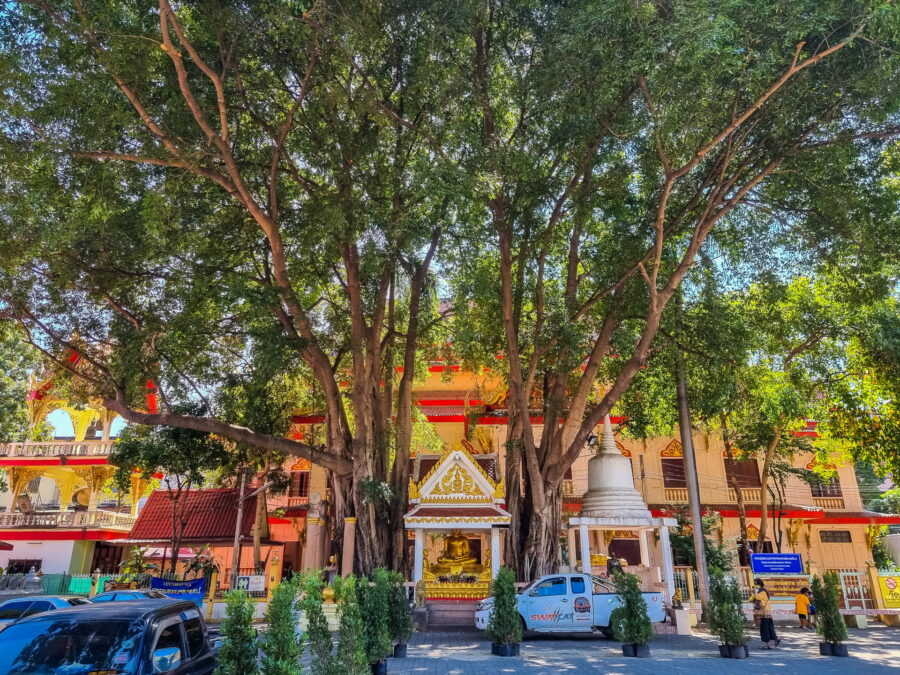
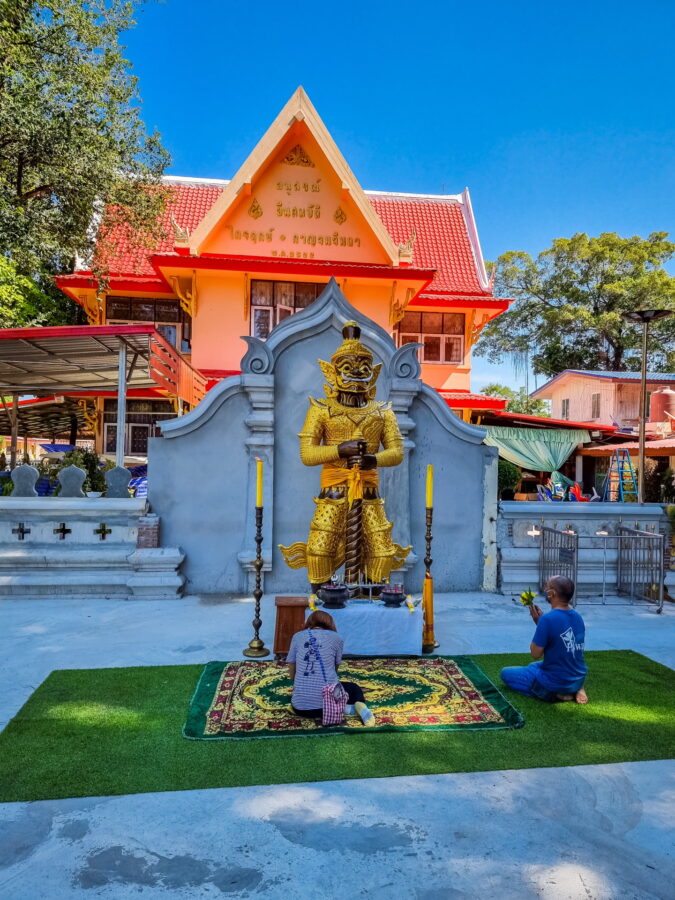
The main prayer hall - separate from the ordination building, which is mostly reserved for monks - is called here Viharn Luang, to emphasize the royal status of the temple. It completes the classic ensemble of buildings found in Thai temples, but is distinguished by its particularly imposing dimensions.
Access to the Viharn is via a staircase flanked by two giant seven-headed Nagas. Inside, one discovers the main image of Buddha, before which the faithful come to pray and make their offerings. Its style is reminiscent of the famous Buddha of Wat Phra Si Rattana Mahathat, PhitsanulokThe patterns, added during the renovation, are repeated on the walls and ceiling and create a beautiful visual harmony.
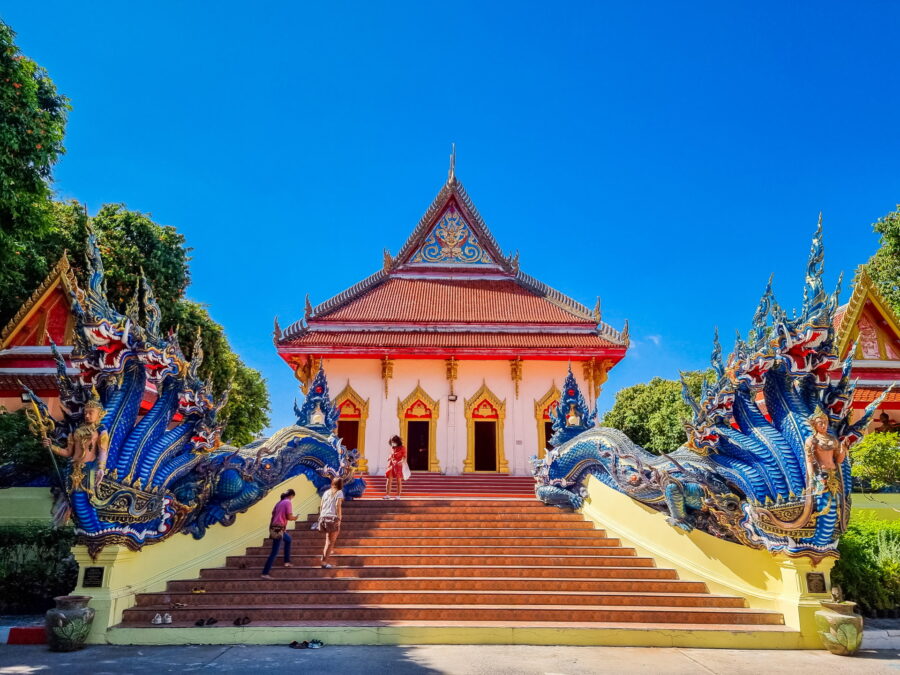
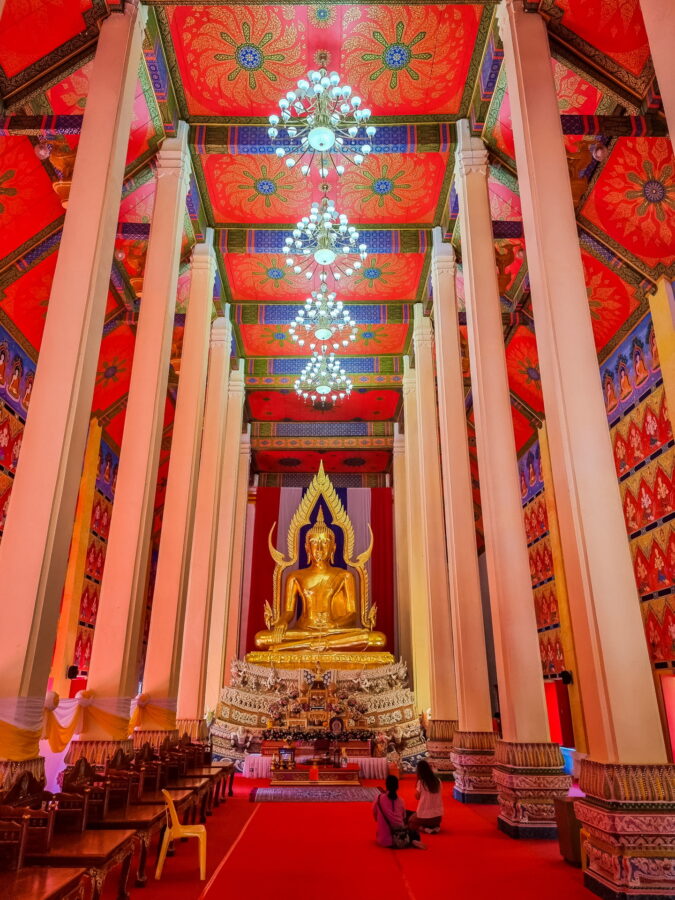
On the other side of the complex, you'll find the iconic golden chedi, as well as a more recently added statue of King Narai. Modern improvements (parking, clear access) make the temple's main entrance more visible from the street.
What Sala Loi
Wat Sala Loi is an important temple in Nakhon Ratchasima, associated with the historical figure of Thao Suranari. The temple is said to have been founded by Ya Mo herself: according to legend, after the victory against the Vientiane army, she had a raft built in the shape of a pavilion, which she set adrift on the Lam Takhong River, with the promise of building a temple on the spot where it ran aground. As you can see, the raft stopped at the current location of Wat Sala Loi.
Ya Mo died in 1853 at the age of 81, and her husband had a chedi erected within the temple grounds to house her ashes. Wat Sala Loi thus became a deeply respected memorial site for the people of Khorat.
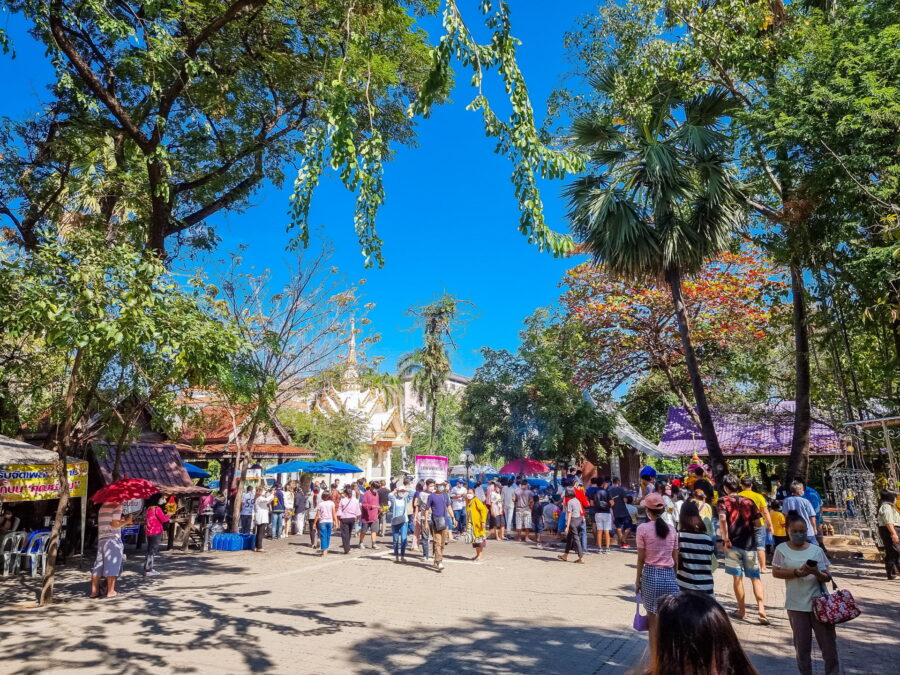
Although a chapel dating back to the temple's founding in the 1967th century can still be found, Wat Sala Loi is best known for its modern Ubosot, built in 1973. It is distinguished by its original architectural style: a junk-shaped prayer hall, designed in a so-called "applied Thai" style and covered with local clay tiles. This originality earned it a distinction in XNUMX from the Society of Architects of Siam as the most beautiful avant-garde religious building.
Inside, the walls are simply painted white, without the usual murals found in most temples. The Buddha statue, also white, reflects this simplicity. It is depicted standing in a posture with both hands facing forward—a gesture known as abhaya-mudrā, a symbol of protection and appeasement.
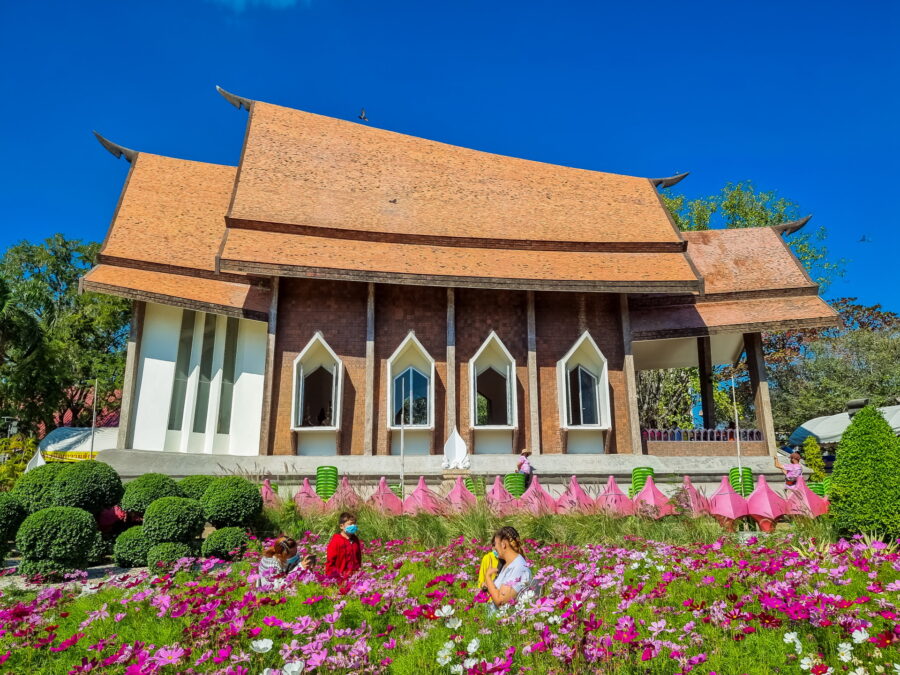
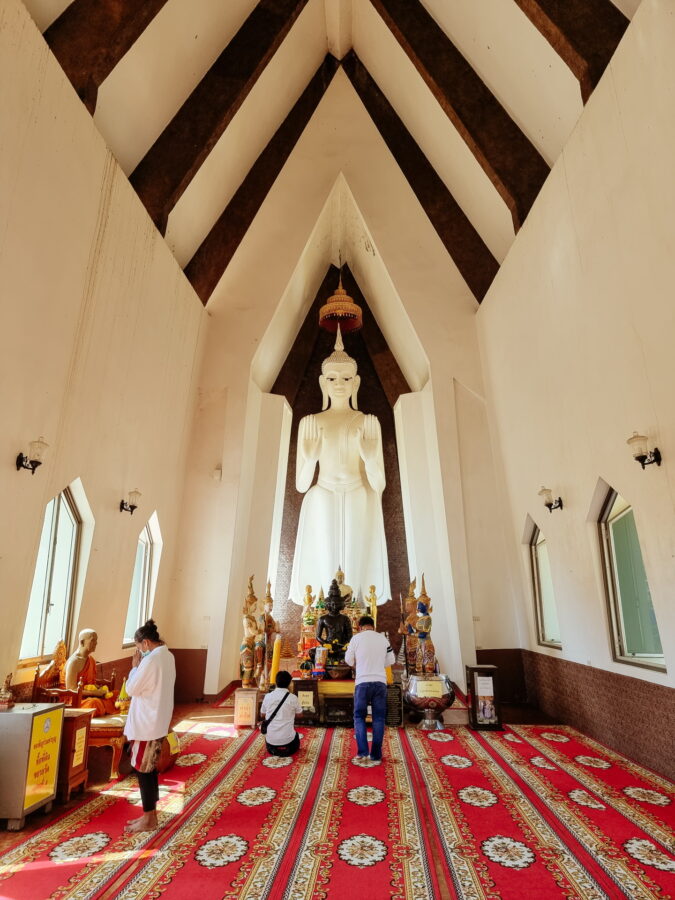
The chedi that is said to house Ya Mo's ashes incorporates elements of Khmer architecture, setting itself apart from the classic bell-shaped style in both its silhouette and the materials used.
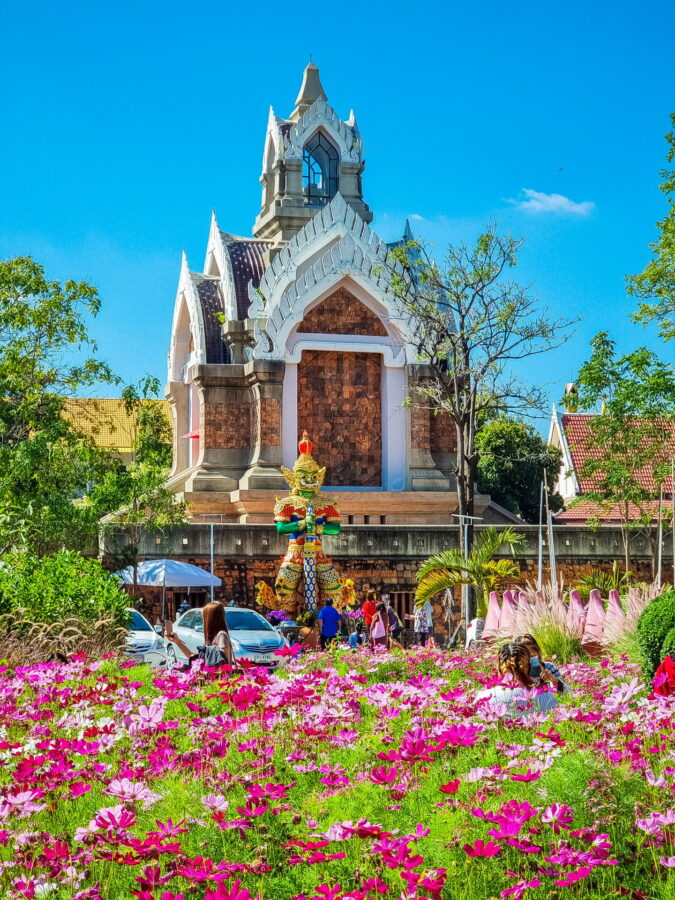
Among the temple's other features is a bridge spanning a small pond just behind the Ubosot—on the day of our visit, it was covered in lanterns. At the back of the complex, a landscaped garden with artificial waterfalls attracts families to cool off or take photos.
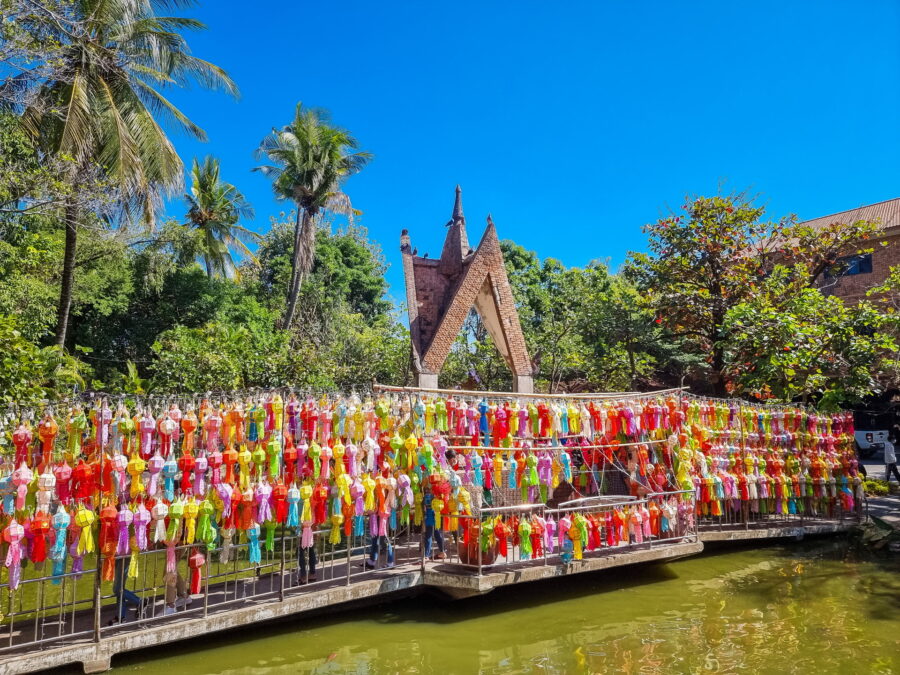
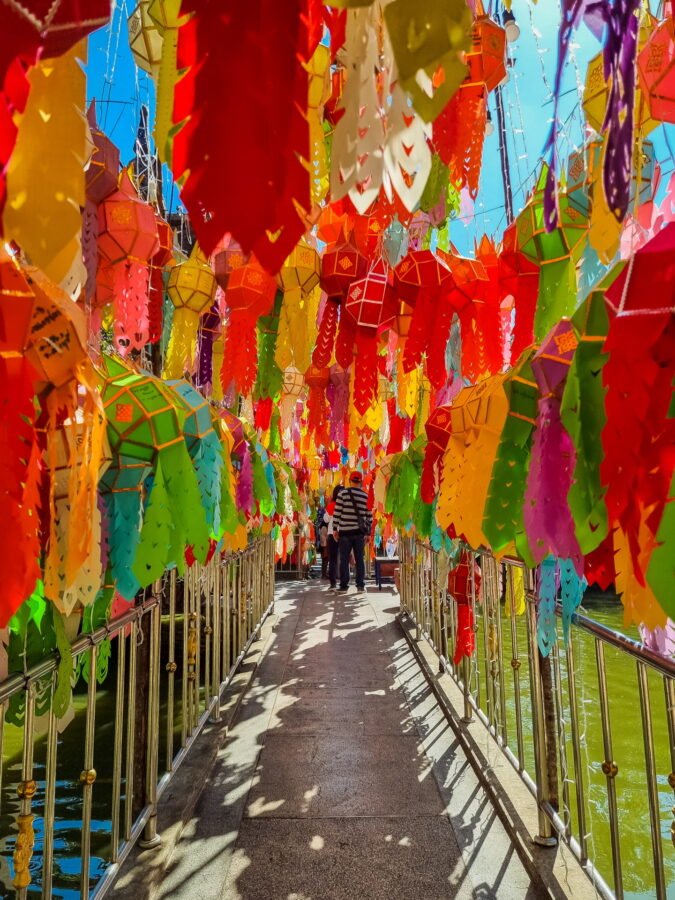
Explore the surroundings of Khorat
If you have some time, and especially if you have a vehicle, there are several interesting visits you can make within a radius of about an hour around Khorat. Whether it's ancient temples, more recent monuments, or simply landscapes to discover, these excursions offer a good complement to exploring the center.
As this article focuses on the city itself, the sites mentioned here were chosen because they are located along the road leading to Khorat, or are in the immediate vicinity, such as Prasat Phnom Wan, located just ten kilometers away.
Prasat Phnom Wan
Prasat Phnom Wan is a well-preserved ancient Khmer sanctuary located about fifteen kilometers from Khorat. Less well-known and more modest in size than the Phimai Historical Complex, it nevertheless remains one of the major Khmer vestiges in the region. According to sources, the sanctuary was founded as a Hindu temple in the 10th or 11th centuries, before being transformed into a Buddhist sanctuary from the 14th century.
The site extends into a lightly wooded environment, with around the main sanctuary some remains of secondary constructions and stone blocks grouped here and there, probably awaiting inventory or restoration.
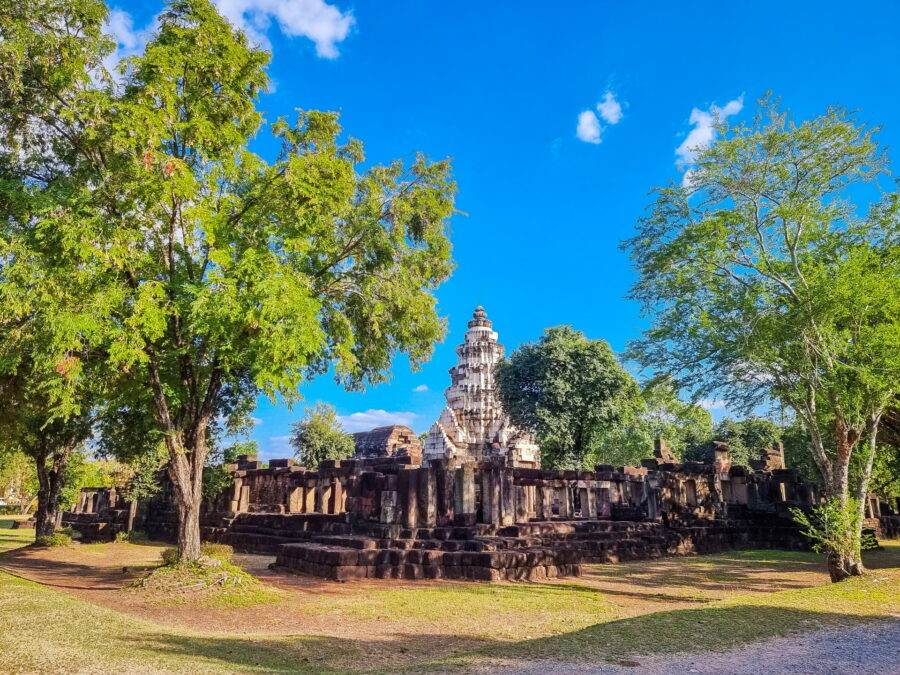
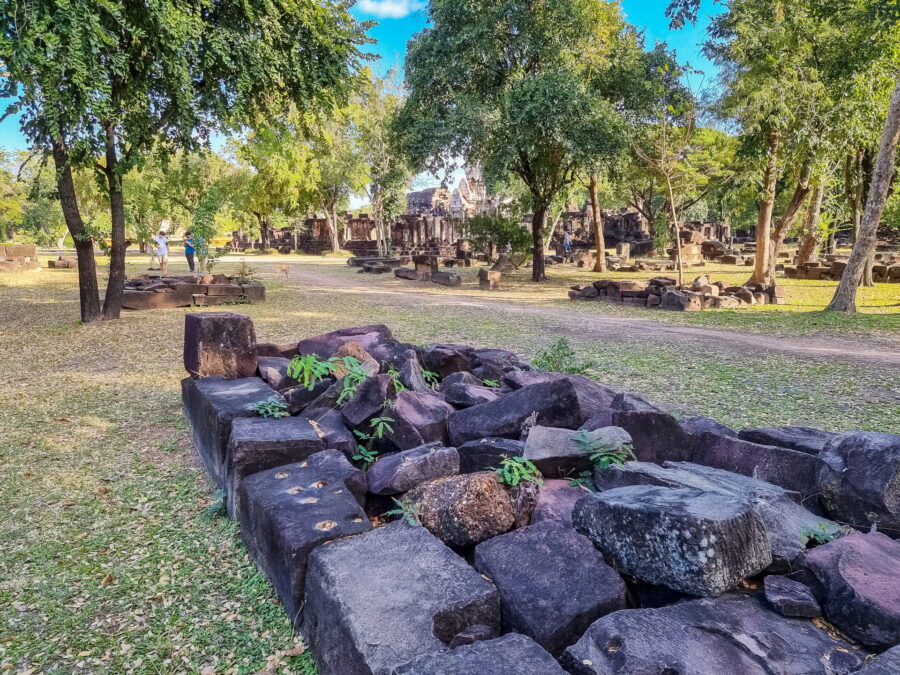
The heart of the sanctuary consists of a prang (a Khmer-style sanctuary tower, sometimes incorrectly called a stupa) preceded by a vaulted antechamber with stone walls and balustraded windows. The whole is located in the center of a courtyard surrounded by a laterite and sandstone enclosure wall. Also notable is the use of red brick, probably added when the temple was converted into a Buddhist place of worship.
Inside the antechamber, several Buddha statues remain, including one housed in a small side room, still filled with the scent of incense. Draped in fabric and decorated with garlands, the statue is still venerated, and worshippers come to make offerings.
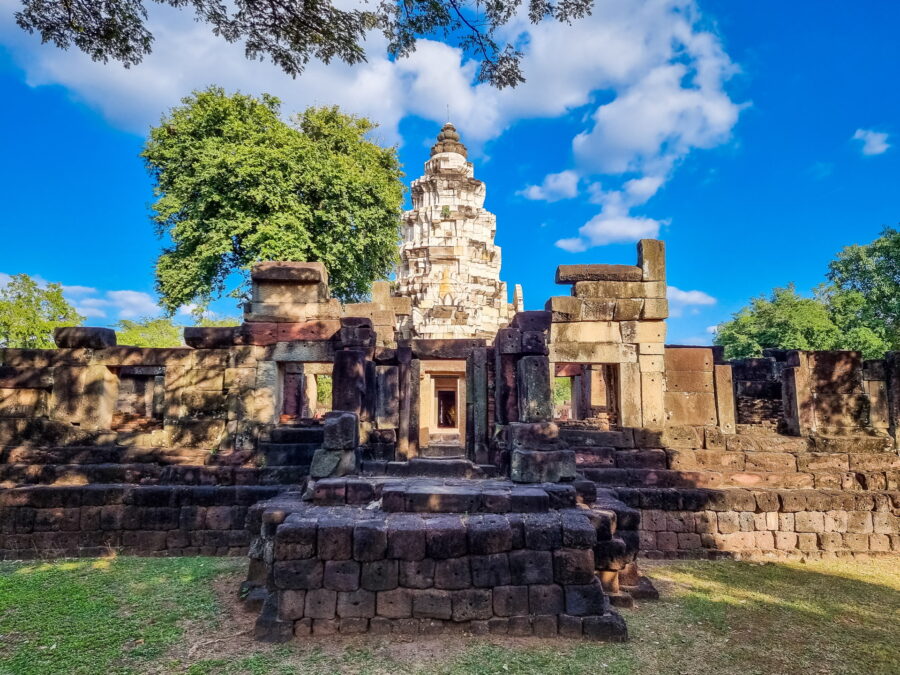
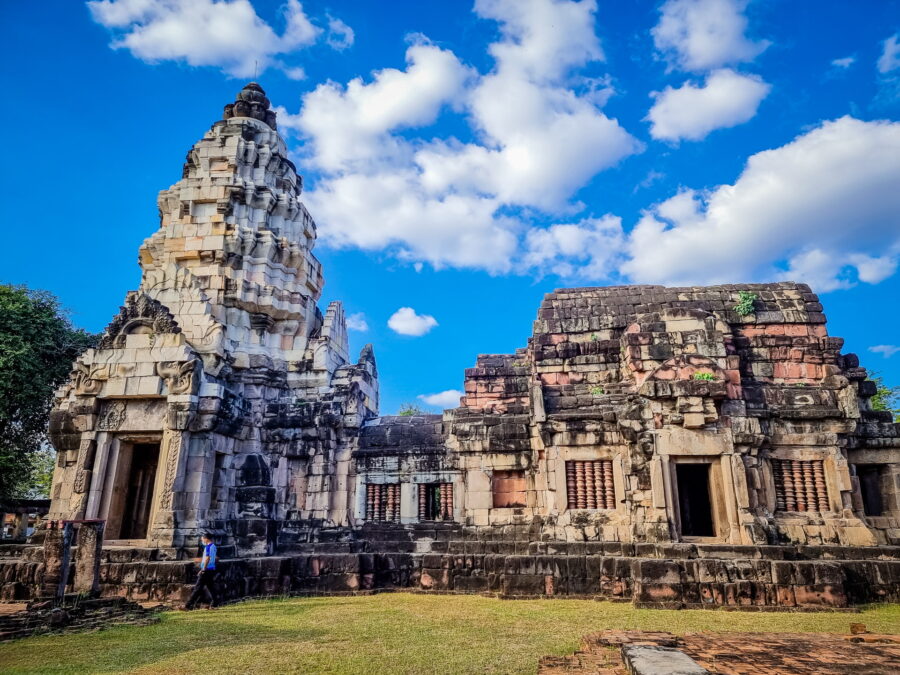
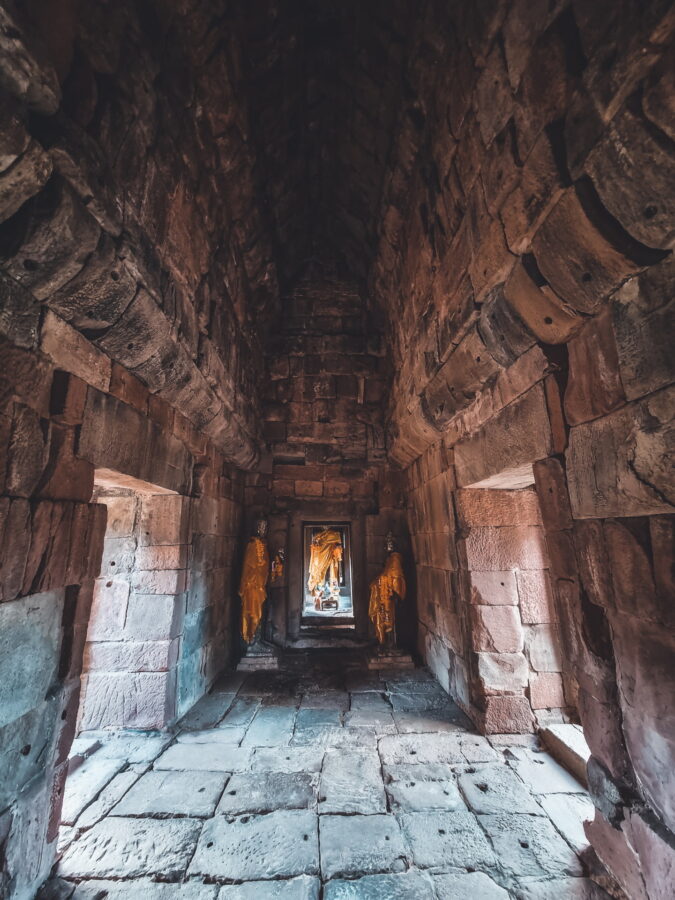
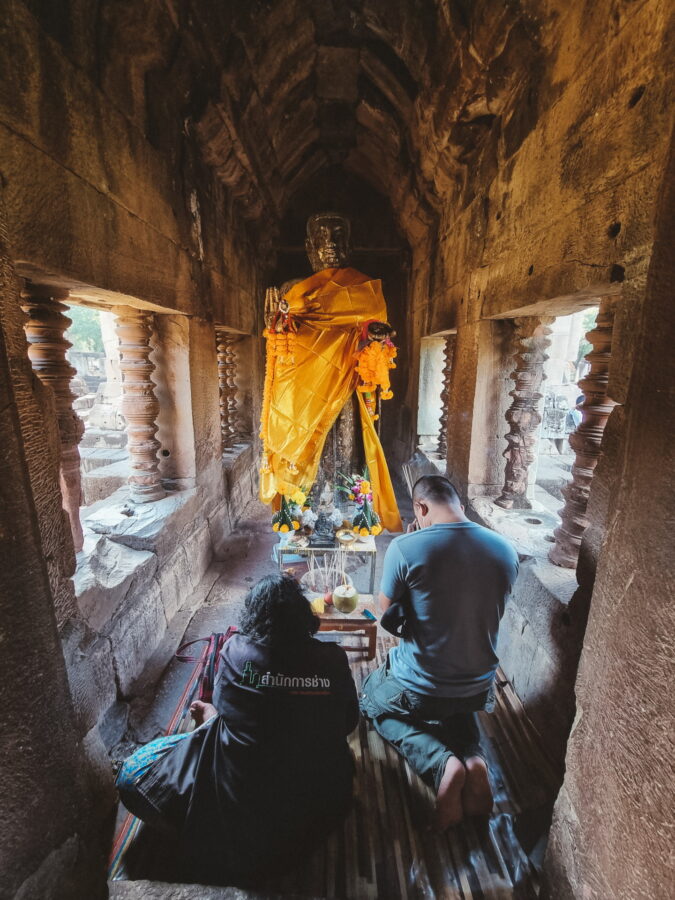
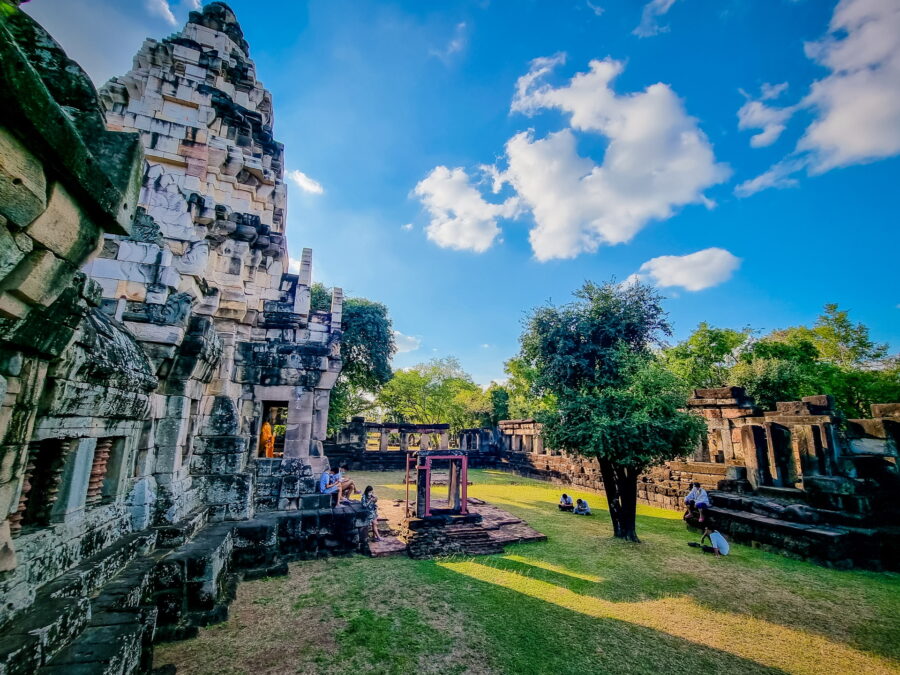
Just below the prang, one notices the rigorous alignment of the blocks forming the roof of the building. Several stones still bear visible numbering, recent elements, custom-cut for the restoration of the sanctuary in the 1990s. These markings made it possible to assemble the structure according to the original plan, integrating the new blocks with the missing or too degraded old elements.
On the exterior, if you look for finely carved bas-reliefs like those at Phimai, you'll notice that there are few of them. And for good reason, the temple is considered unfinished. However, there are some rough elements, including a pediment depicting a naga arch, where only the volumes have been sketched. This type of detail provides valuable evidence of how Khmer artisans worked: they began by roughing out the stone to lay out the general shapes, before returning to sculpt the details, area by area.
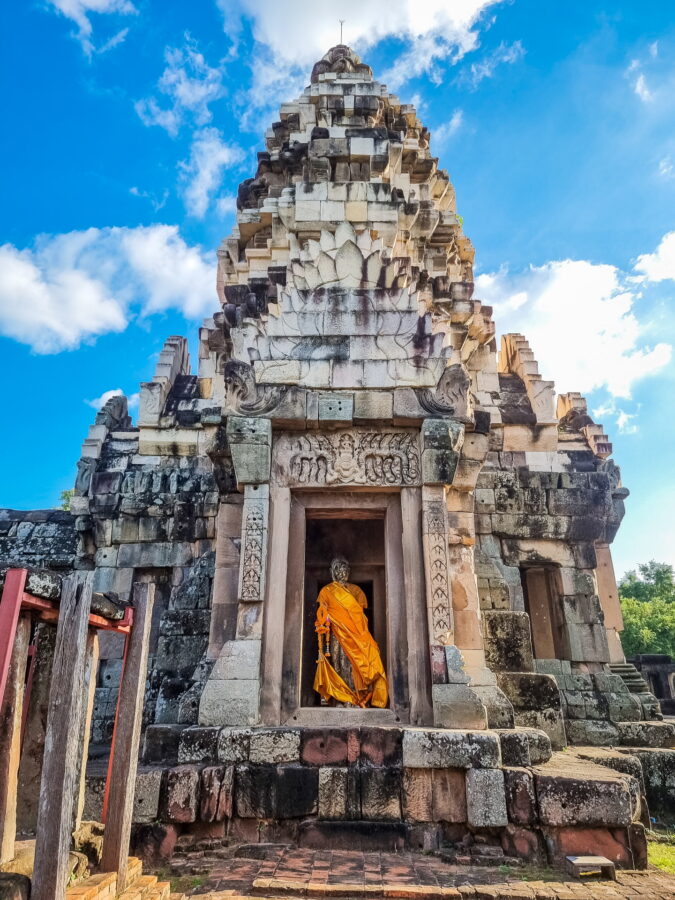
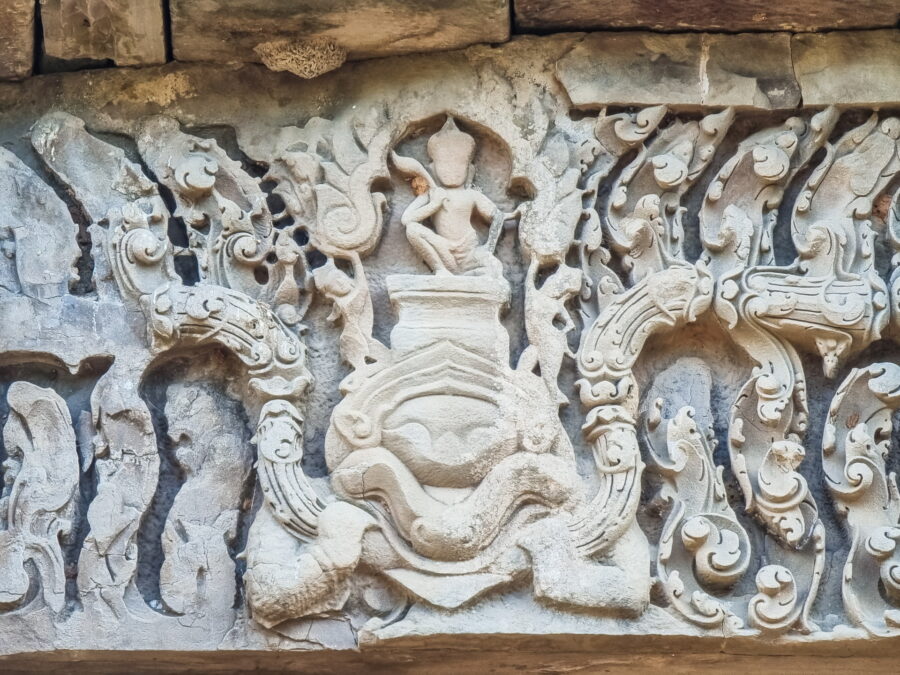
There are, however, some floral decorations on the prang's pilasters, as well as a beautiful lintel typical of the Baphuon style, depicting a deity seated above a kâla, whose arms stretch out garlands coming from its mouth. While doing some digging for this article, I learned that several other lintels from the site were transferred to the Phimai Museum, while the oldest is now housed in the National Museum in Bangkok.
In the southwest corner of the site, the only other structure within the enclosure can be seen, the remains of a small tower built of sandstone. The absence of carved decorations makes it difficult to date it precisely, but the use of large blocks at its base suggests that it dates back to an earlier period, probably between the 7th and 9th centuries. Its shape and location are also reminiscent of a secondary tower found in the courtyard of the Phnom Rung Sanctuary.
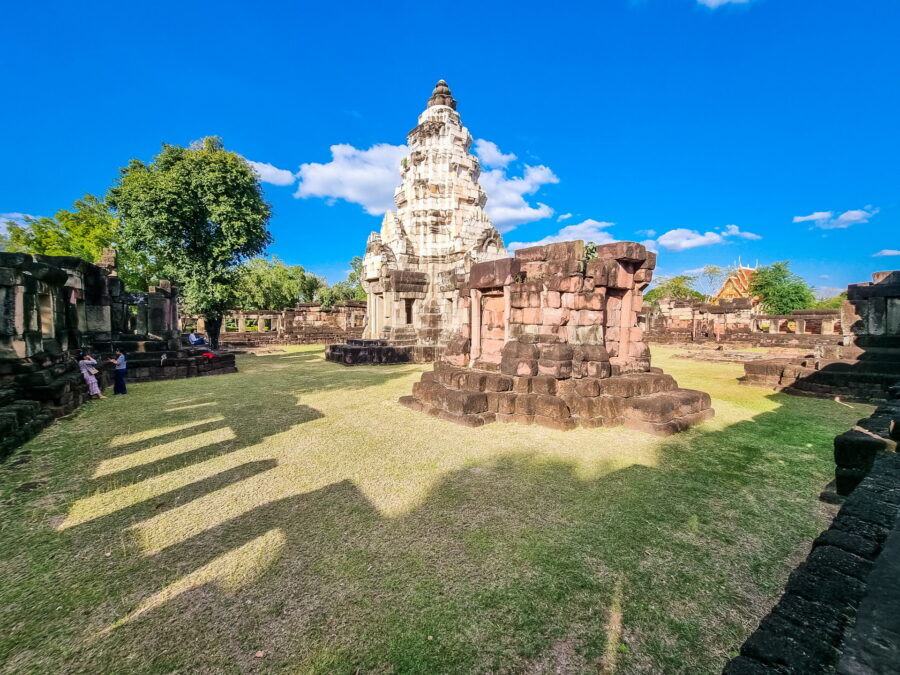
To finish the description of this site, know that the main entrance to the sanctuary was to the east, through a gopura which today faces a modern Buddhist temple, built right next to it and bearing the same name. Along the latter, you will see a small, discreet ruin, mentioned under the name of Noen Oraphim on the maps, just before reaching a pond covered with lotuses and water lilies.
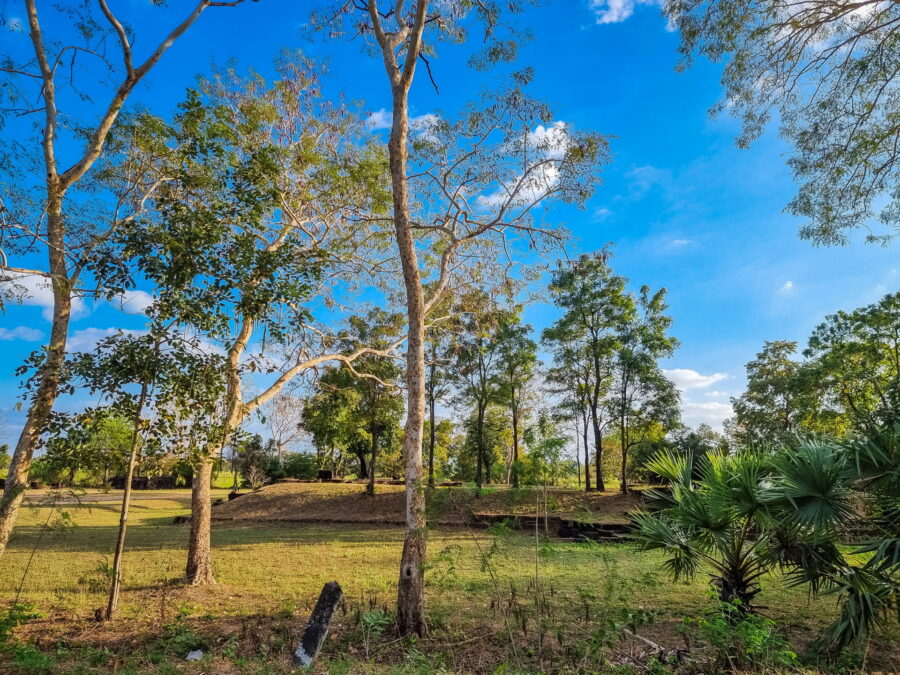
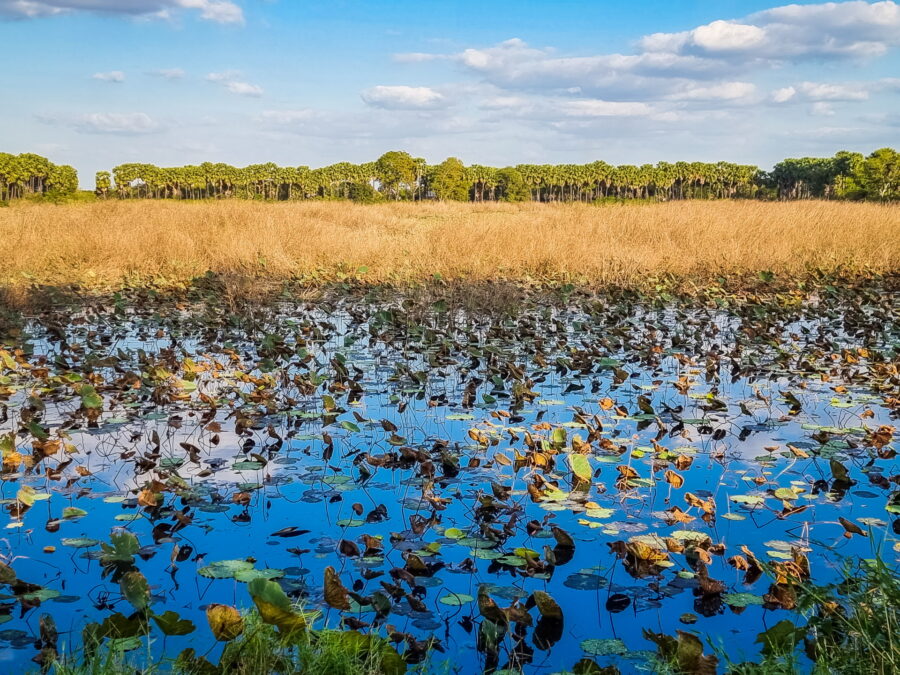
Little anecdote: As is often the case in Thailand, dogs roam freely around the sanctuary. This one was no exception, but one of them—a very sociable female dog—accompanied us throughout the visit… even climbing into the car, as if she were waiting to be adopted! Needless to say, Jitima was on the verge of taking her with her, even though we had just lost one of our two dogs.
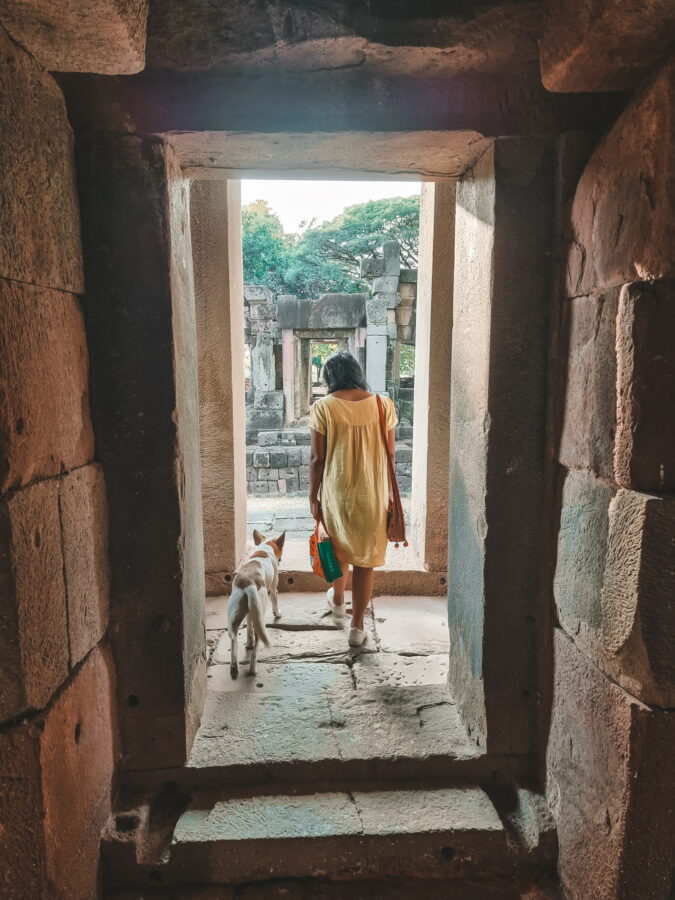
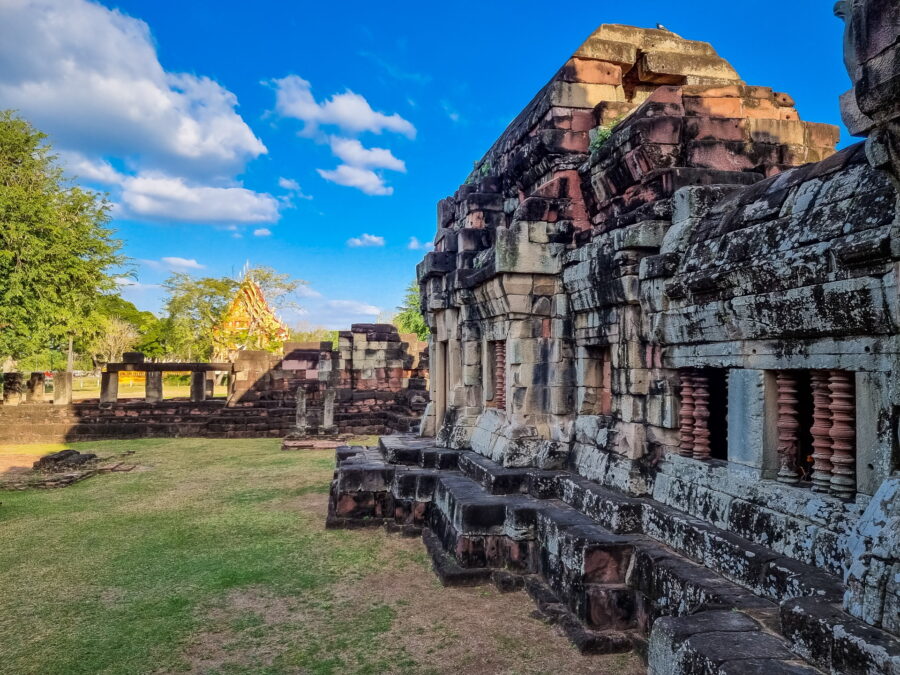
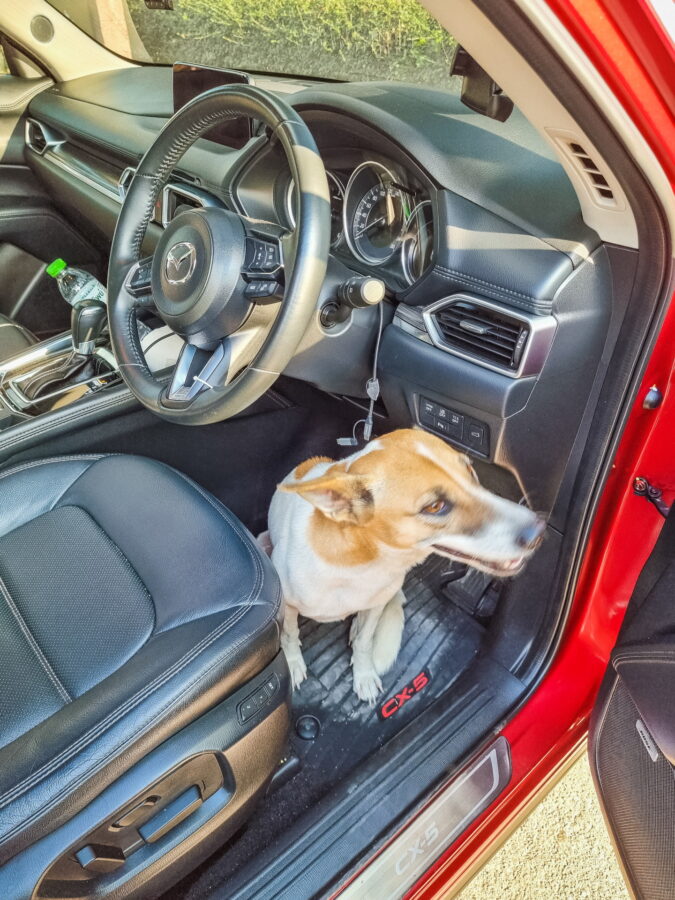
Other Khmer remains in the surrounding area
If you still have some time (and motivation), there are other Khmer sites to discover around Khorat, most of them located downstream from the city. They don't have the grandeur of Phimai or even Phnom Wan, but they may be worth a stop if you're in the area and appreciate old stonework.
- Muang Sema
A historic site housing the remains of an ancient Dvāravatī city, located 40 km from Khorat. It contains the remains of an earthen enclosure, some ancient structures, and a small local museum. The site is best known for the nearby temple, Wat Thammachak Semaram (or Wat Phra Non Khlong Khwang), which houses what is believed to be Thailand's oldest reclining Buddha: a large sandstone statue approximately 13 meters long, probably carved between the XNUMXth and XNUMXth centuries, during the Dvāravatī Kingdom. - Prasat Non Ku and Prasat Muangkhaek
Both sites are located on the same road, southeast of the city, about 6 km from the national highway. The first consists of the base of a sandstone tower, surrounded by remains of a mixture of sandstone blocks and red bricks. Prasat Muangkhaek, located just 600 m away, is a small sandstone and red brick sanctuary dating from the early XNUMXth century. Badly damaged and without its cloister, it nevertheless offers the opportunity to venture a little into the surrounding countryside. - Wat Prang Muangkao
Just 3 km from the two previous ones, this other small ruin is located within the grounds of an active temple. It is a laterite and sandstone shrine, dating back to the XNUMXth–XNUMXth centuries. It is believed to have served as a chapel for one of the hospitals founded during the reign of Jayavarman VII, at a time when the ruler was having this type of building erected throughout his empire.
Sikhio Stone Quarry Site
A bit of an exception on this list, this site is not a Khmer sanctuary, but an old sandstone quarry. Located about ten kilometers south of Sikhio, it is said to have been used to extract the blocks used for the construction of certain temples in the region. You can still see the traces left by the cuts on the slabs, which gives a fairly concrete overview of the carving work of the time. Nothing extraordinary in itself, but if you are passing through the area, a short stop may be worth it out of curiosity.
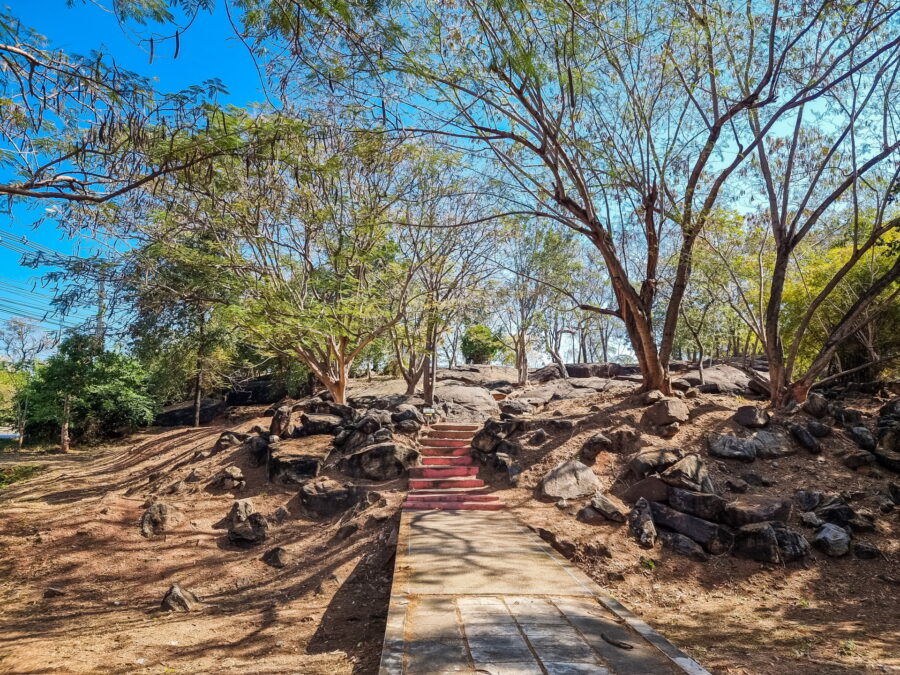
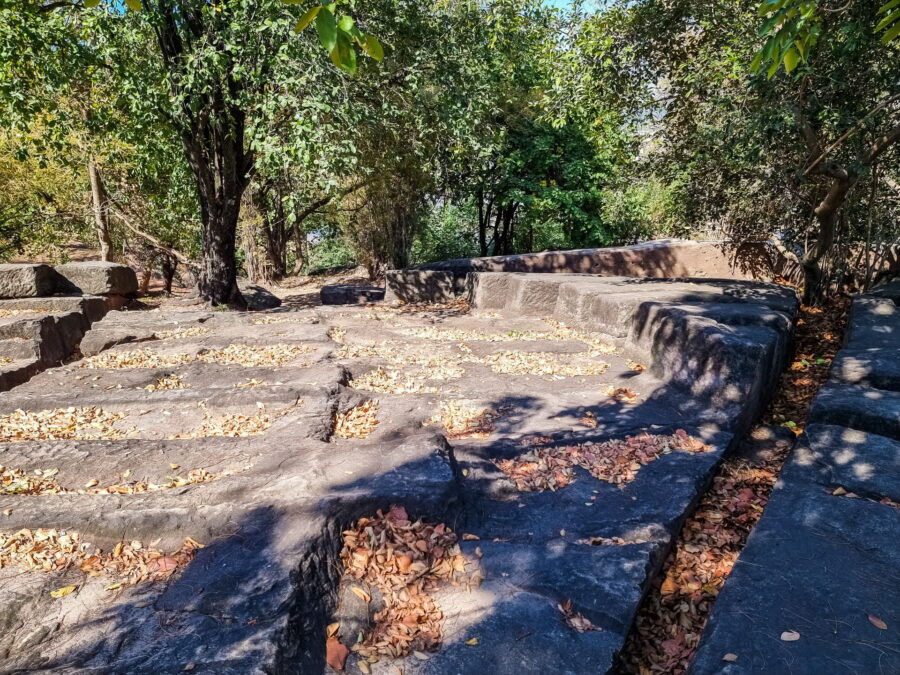
Wat Luang Phor Toh
To provide some context, I didn't visit this temple during the same trip as the other places mentioned. But being located about forty kilometers away, directly on the road leading to Nakhon Ratchasima, it deserves its place in this article.
A little clarification on its name: it is not entirely clear whether it is officially a What (a registered temple) or simply a shrine or foundation. In Thailand, not all places of worship carry the official status of "Wat": this title is only granted after validation by the authority supervising religious affairs (the National Bureau of Buddhism, to be exact).
On Google Maps, you can see several names associated with the site. For example, the administrative building at the entrance is listed as Somdej Phra Buddhachan (Toh Phromrangsi) Foundation Metta Baramee, while the main building is noted Mulanithi Luang Pho Tosornphong — “mulanithi” can be translated as “foundation”, which would give “Luang Pho Toh Foundation of Soraphong”.
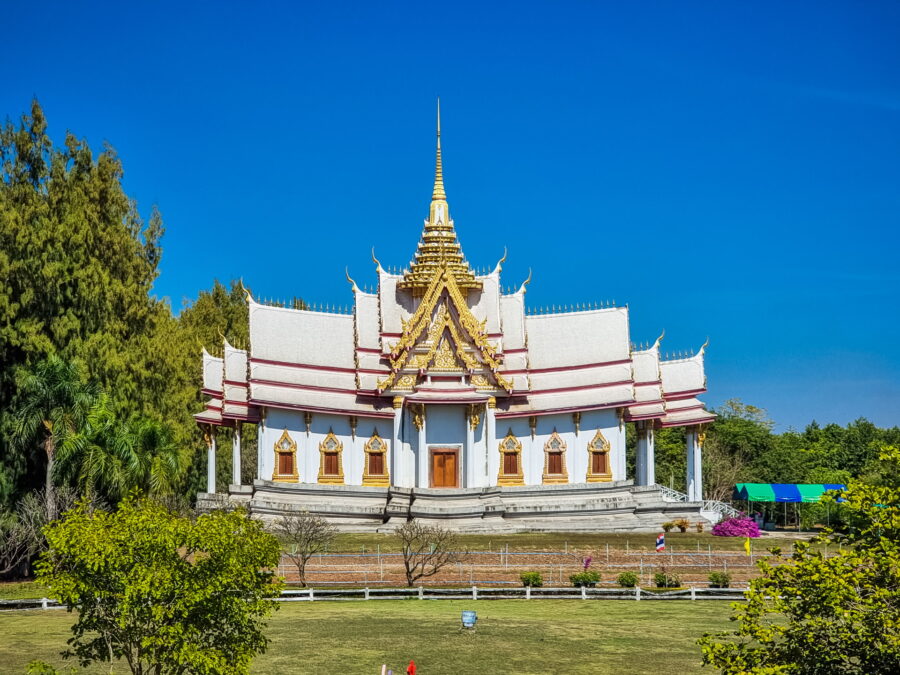
A third building, a chapel located off to the side, bears the name of Temple of Wat Luang Pho To Soraphong — a mixture that reflects the two figures associated with the place:
- Luang Phor Toh, the revered monk to whom the site is dedicated,
- et Sorapong Chatree, a huge Thai cinema star, who largely financed the creation of the site starting in 2001. The actor, highly respected in the country, is credited as one of the main benefactors of the project.
The entire site is a large, modern religious complex centered around a huge golden statue of Luang Phor Toh, surrounded by several new buildings. Just the walk from the road to the parking lot demonstrates the care taken in the layout of the site. The path crosses a perfectly maintained area, which is every bit as good as a golf course.
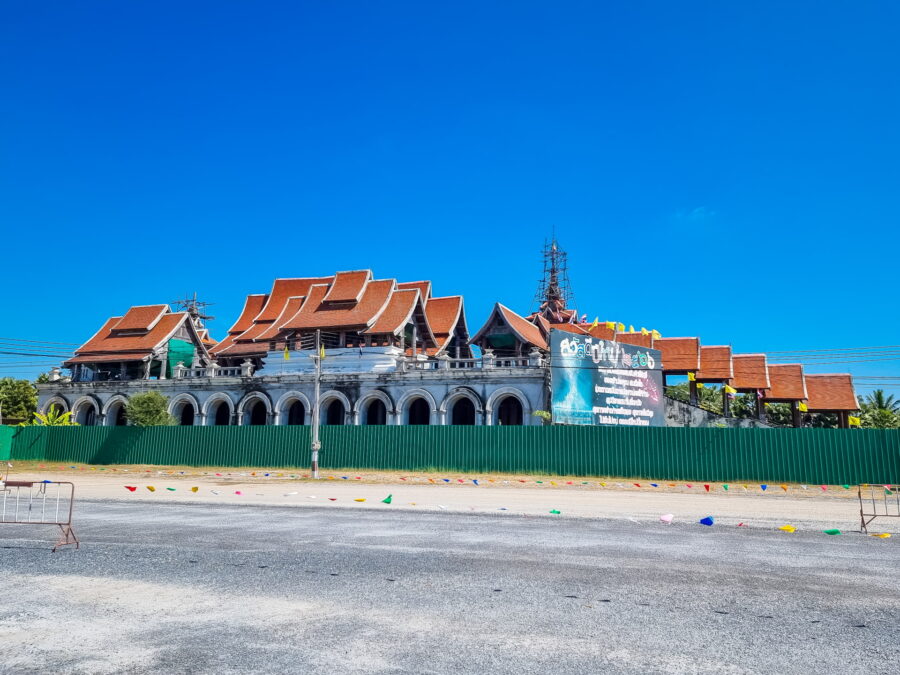
From the parking lot, a monumental structure, still under construction, can be seen, surrounded by green barriers. The building's scale suggests an ambitious project, but construction seems to have stalled—likely following the death in 2022 of Sorapong Chatree, the site's main patron. This type of place is often in a state of continuous evolution, with new buildings added over time, but here, the momentum seems to have stalled. I learned, for example, that a project for a 100-meter reclining Buddha never came to fruition.
To reach the main building, you cross a pretty garden, almost a small forest with its streams. A small bridge leads to the central chapel, which almost evokes a castle from a heroic fantasy setting.
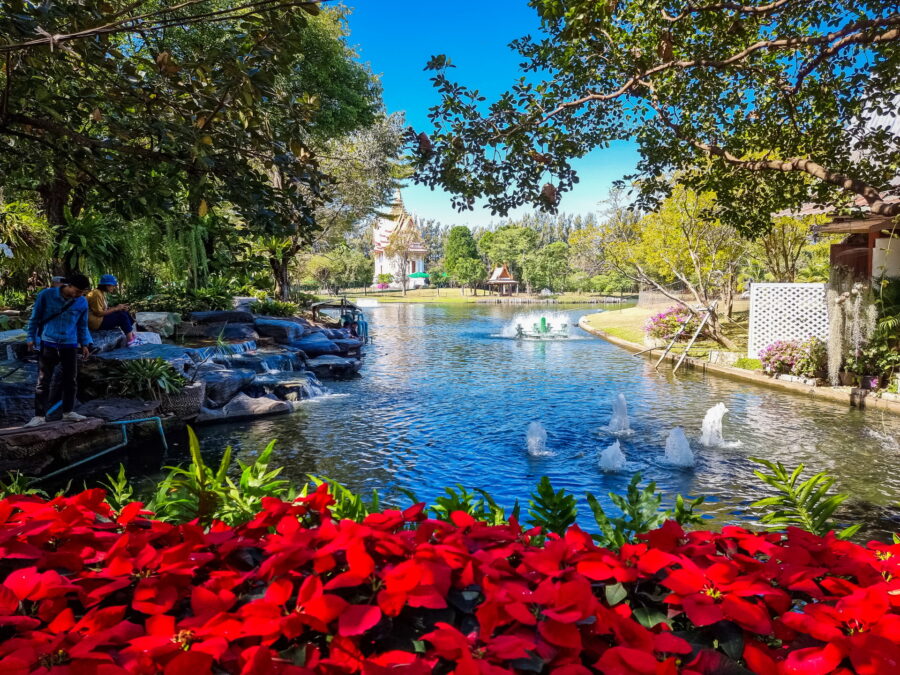
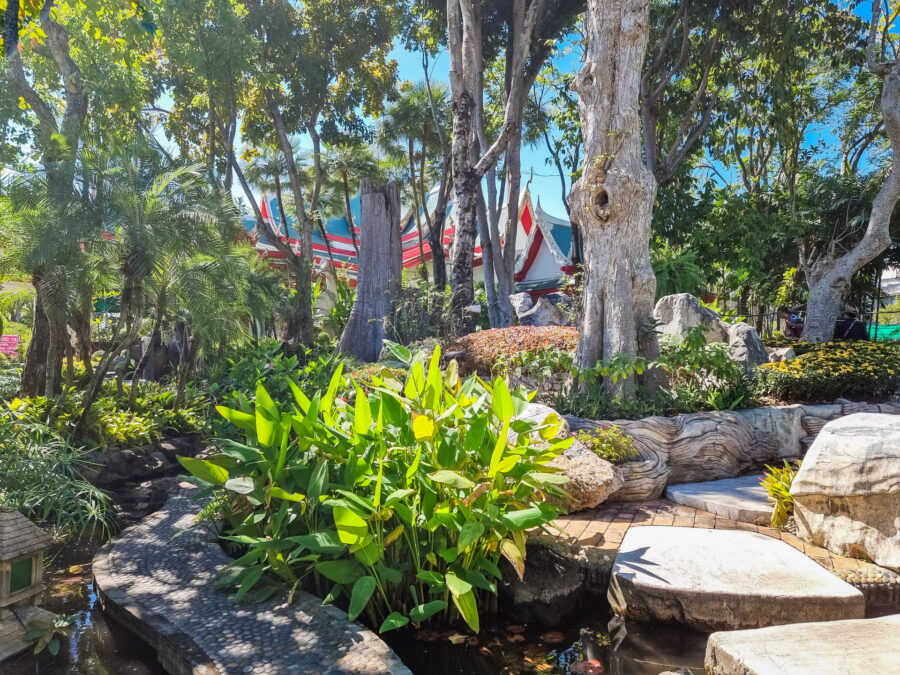
Just before entering, you pass a large fountain. The water is exceptionally clear—it's like a resort pool. An impeccable setting, just like the rest of the site. From the entrance, you can also see the Ubosot—the famous third building mentioned above—recognizable by its curved base.
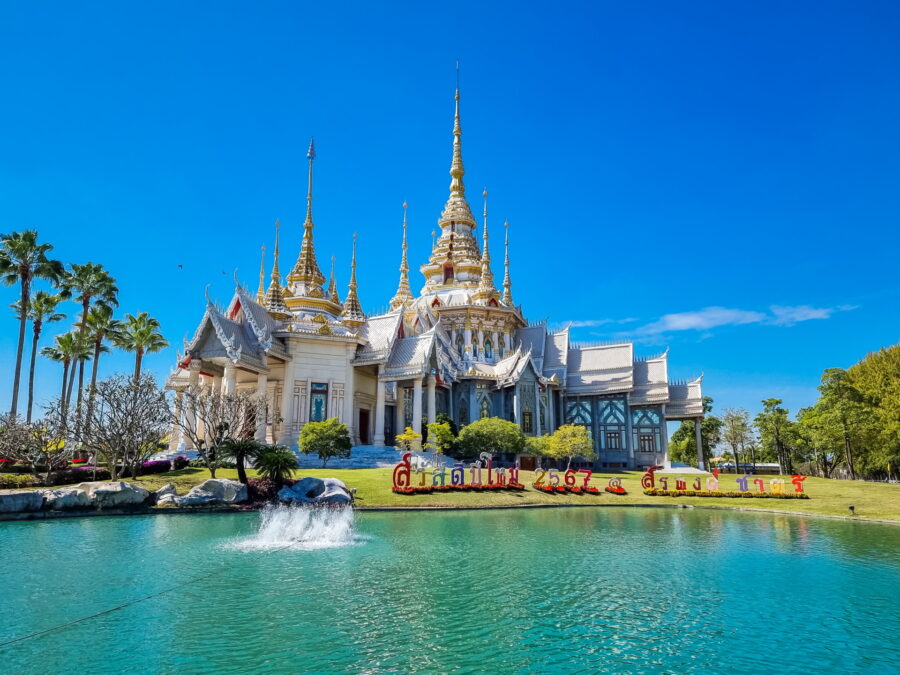
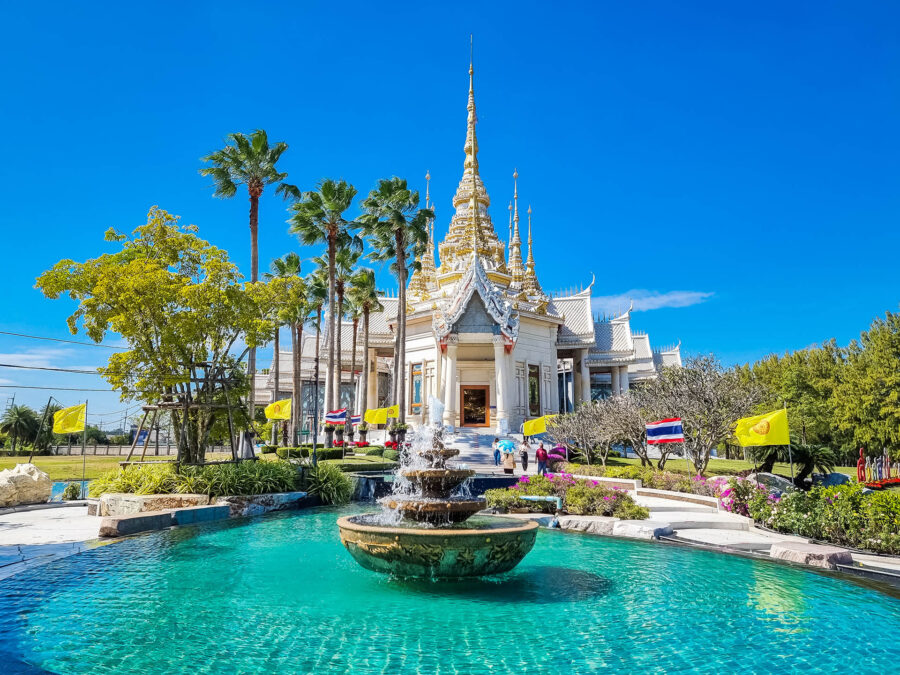
Inside, the rough walls and unfinished finishes confirm that the construction site is on hold, likely due to a lack of funding. At the back of the room, a large gilded statue of Luang Phor Toh dominates the space, seated on a plinth preceded by wooden steps.
Visible from the entrance, it draws the eye with its serene posture, while the golden dome above accentuates its aura. The whole thing exudes a solemn atmosphere, reinforced by the tall columns and the impressive volume of the room. There's almost a slightly kitsch feel to the whole thing, but it must be said that it's impressive.

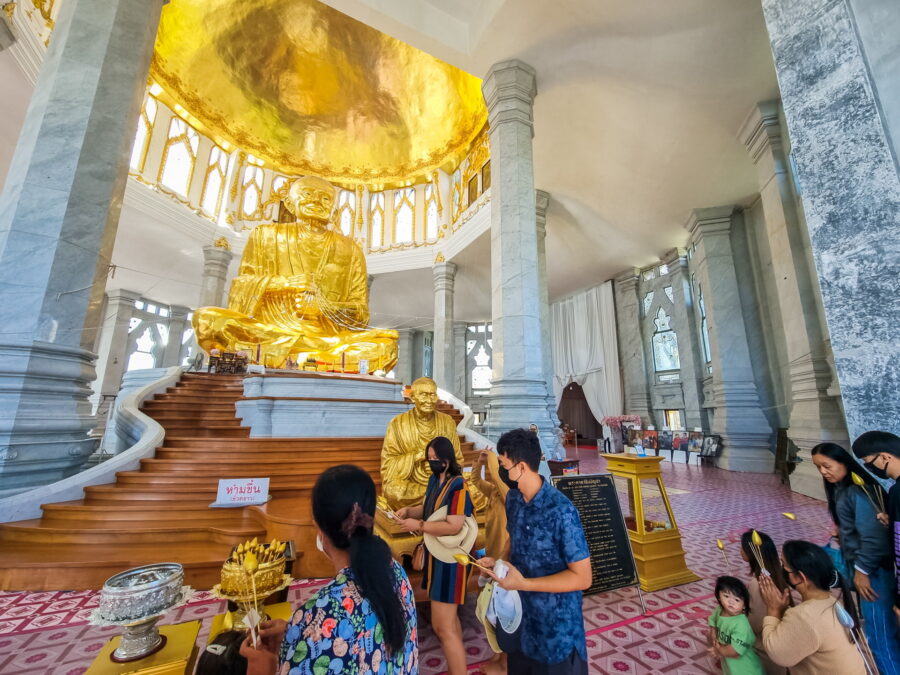
A little note in passing : just northwest of the complex is another temple, the Wat Non Kum (วัดโนนกุ่ม), which directly adjoins it. However, he did not no link with the website dedicated to Luang Phor Toh. On Google Maps, many photos associated with Wat Non Kum actually show the neighboring temple — which is confusing. Wat Non Kum is an older monastery, with a yes traditional one still visible — it is the ordination hall specific to the temples of Isan, often simpler and rooted in local architecture.
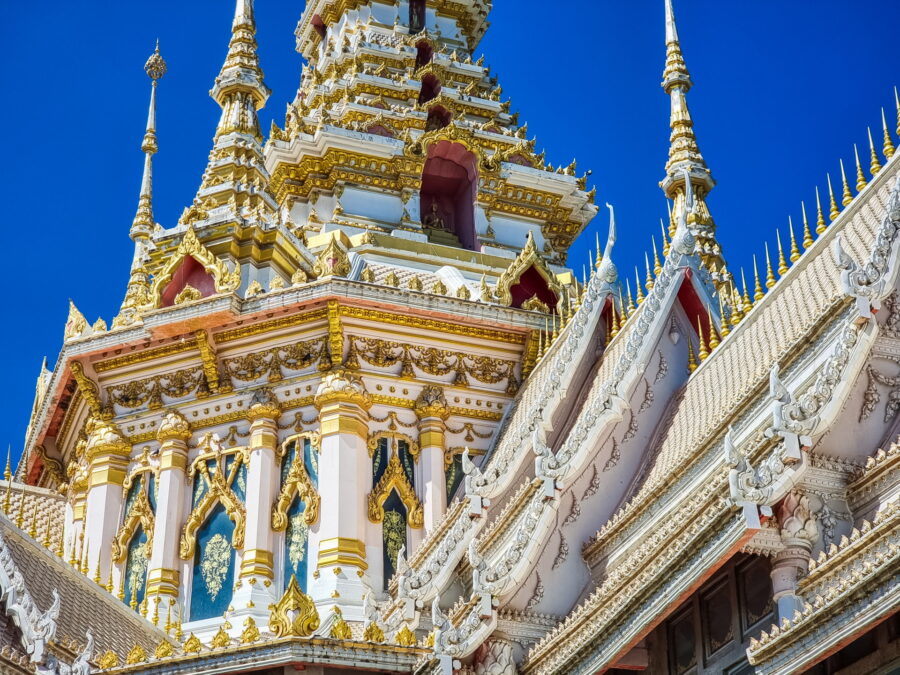
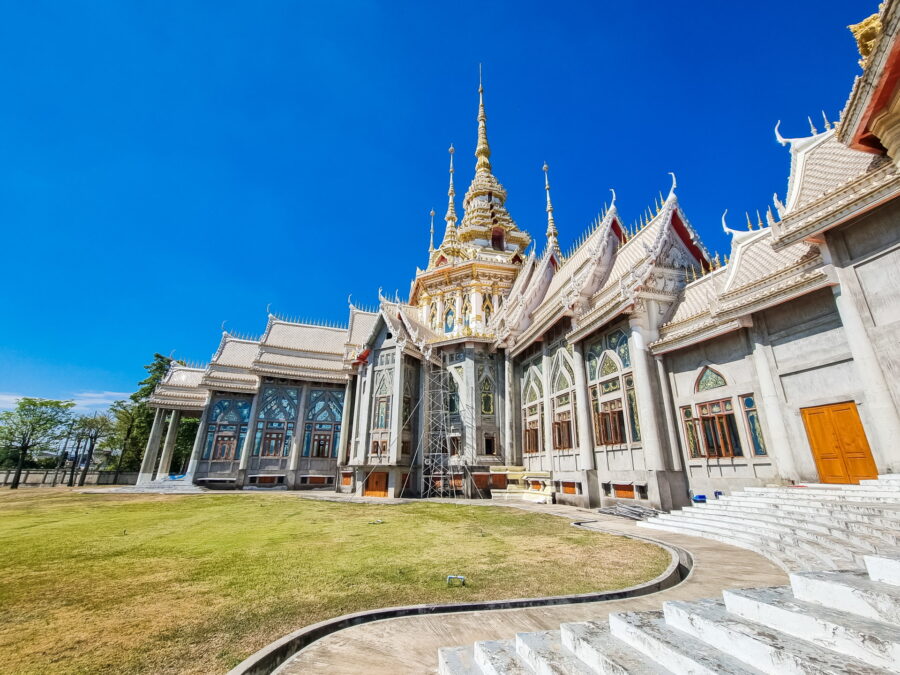
From what we can see thanks to Gmaps, a Monumental Buddha is under construction, a sign that the development of the site seems to be driven by the growth of the large neighboring complex.
Khao Yai Thiang Windmill
Up in the hills, about an hour's drive before arriving in Khorat, you can reach a panoramic viewpoint located near the village of Khao Yai Thiang - the word "Windmill" is not there by chance: a row of wind turbines surrounds a large reservoir and gives the site its character.
The place attracts quite a few people for photos, as there is a clear view of Lam Thakong Lake and the surrounding plains, dotted with hills and plateaus on the horizon.
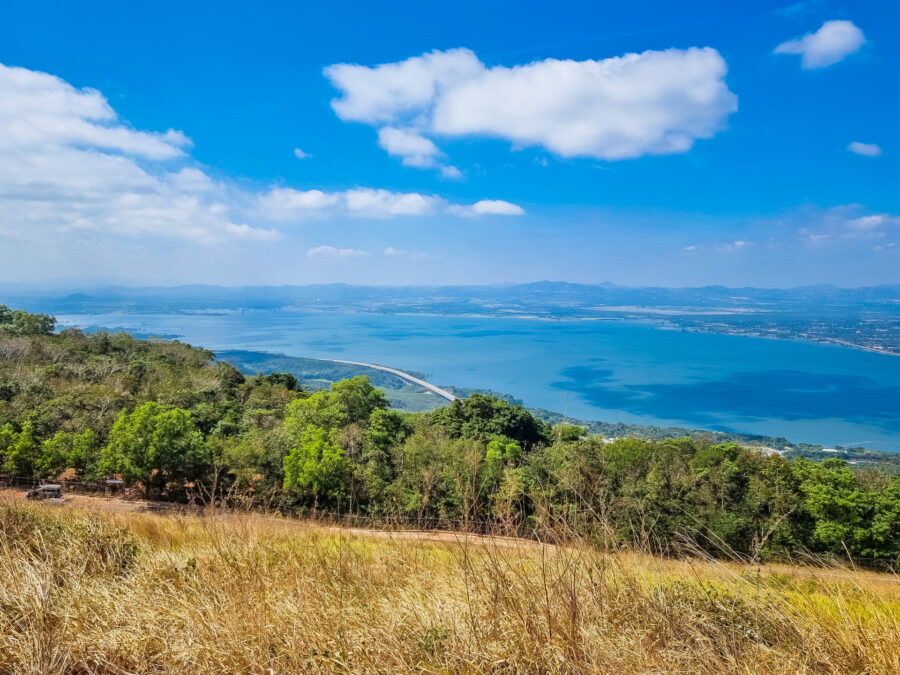
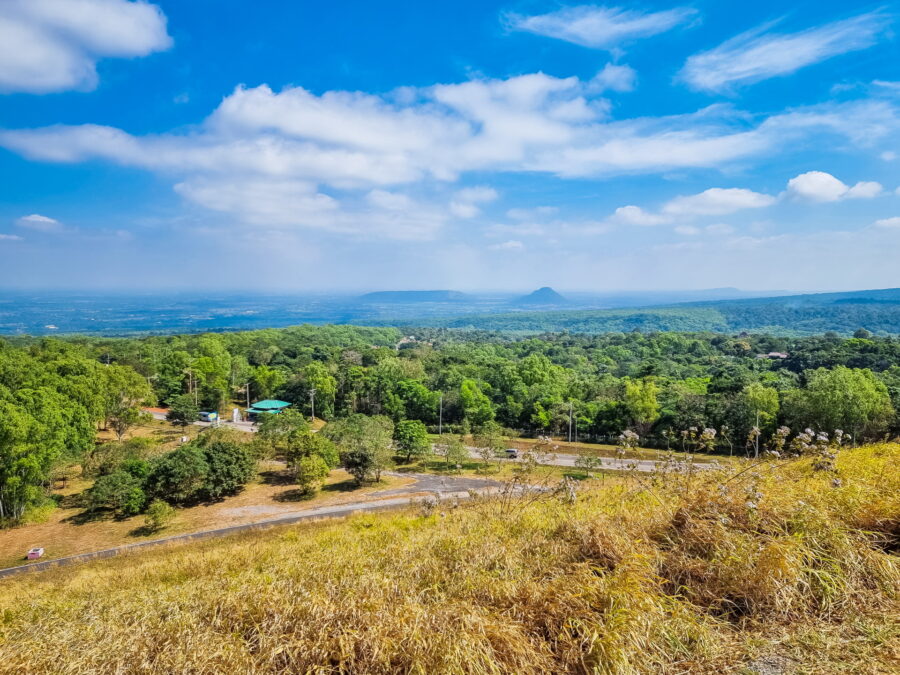
To get around it, you have several options: on foot, by electric cart, or, as we did, by renting bikes. The activity is quite profitable for the rental companies: even if it's not very expensive (50 baht per hour, from memory), it takes barely 30 minutes to complete the 2 km route.
For our part, we had chosen the bike to go a little faster: we had a quick visit planned for the wife before hitting the road back to Bangkok - it was our stop on the way back.
Note that even though the altitude isn't very high (around 650 m), the area is well ventilated. We were there in January, and in shorts and a t-shirt, it was almost chilly. Bring a light layer if you're sensitive to the cold!
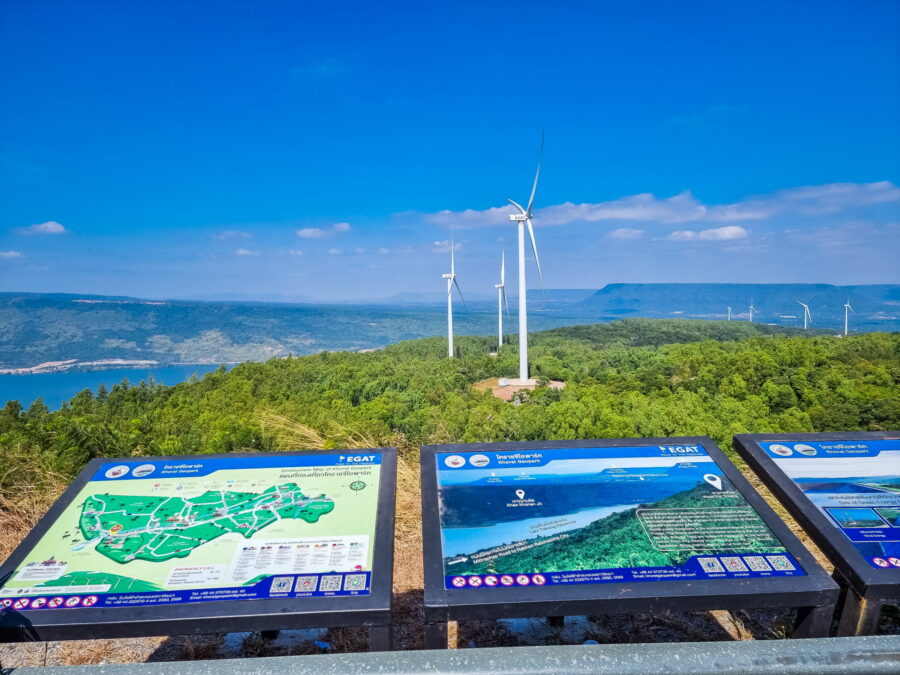
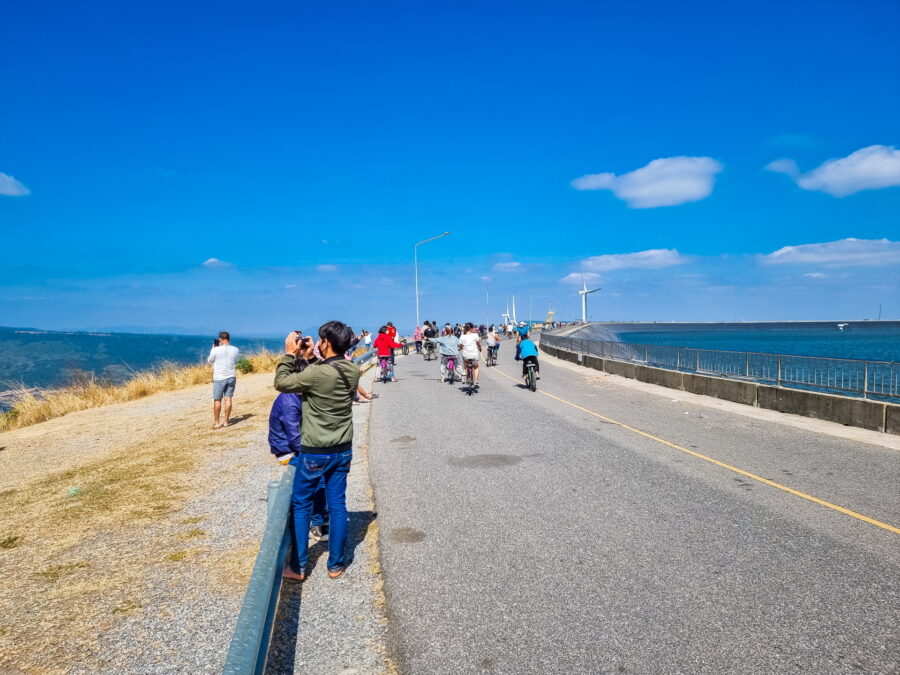
If you are still hesitating about stopping...
Nakhon Ratchasima deserves more than just a transit city. But with its historic center, unique temples, nearby Khmer ruins, and a few unusual sights, the city can make a worthwhile stopover—especially if you're heading to Phimai, Udon Thani, or Nong Khai, or want to explore Buriram and Khao Yai National Park, less than an hour and a half away.
It may not be the most spectacular or must-see destination in Isan, but it's a good base for exploring the region, with all the comforts of a major Thai city.
Finally, if you are looking for a place to stay, I slept during this stay at Leosor Hotel, a very good value for money hotel 20 minutes walk from the historic center.
Not necessarily on your list at the start, but it's a change from the overly formatted steps - and that's already a good point.


